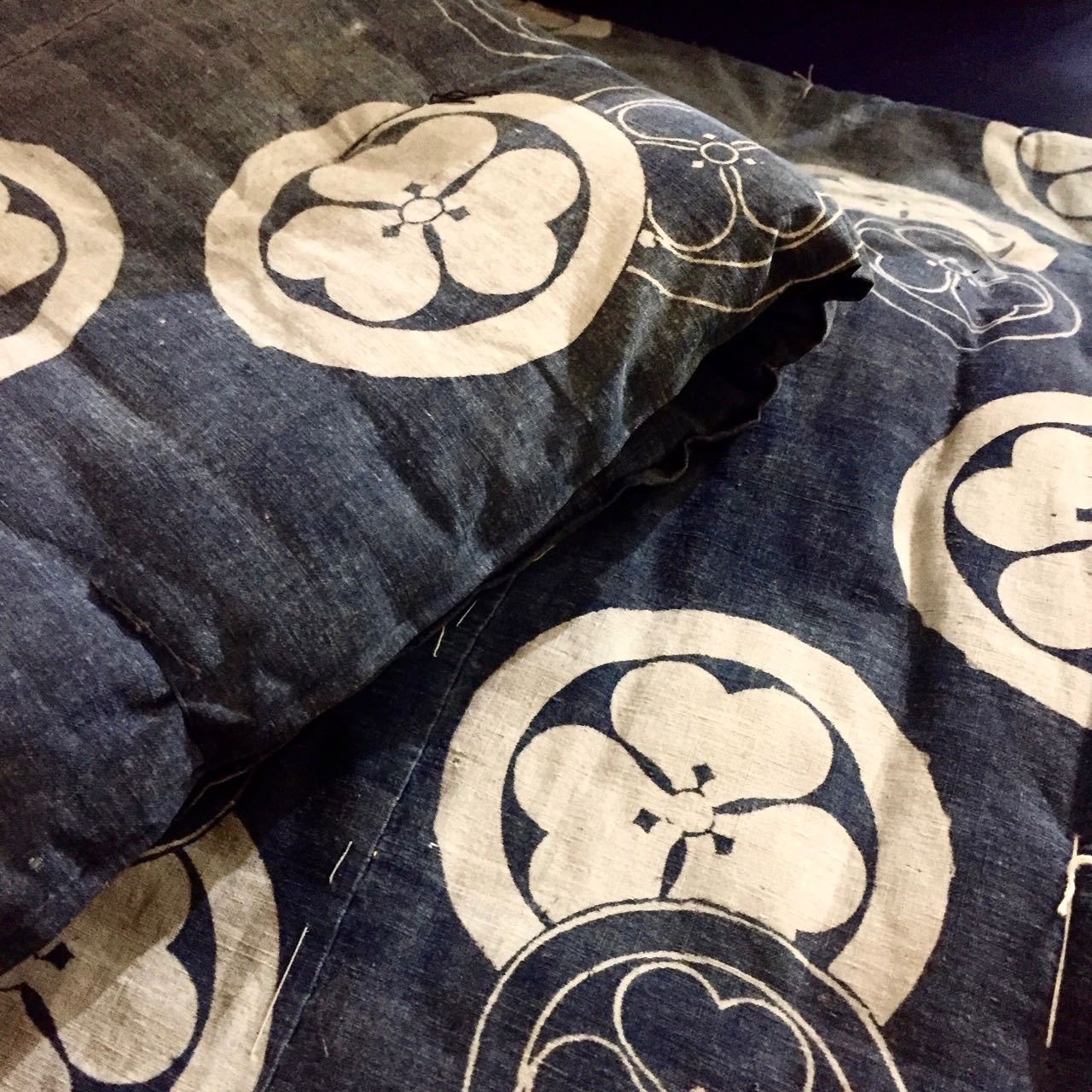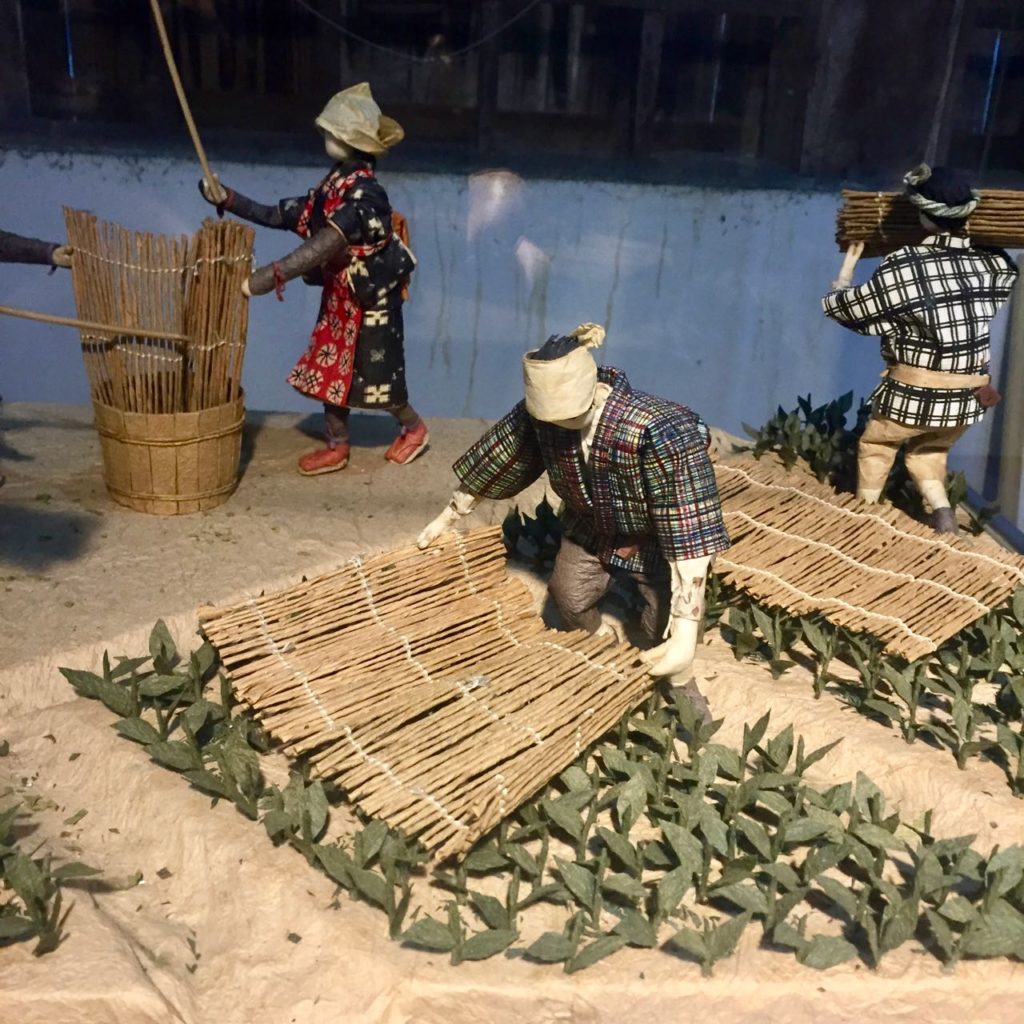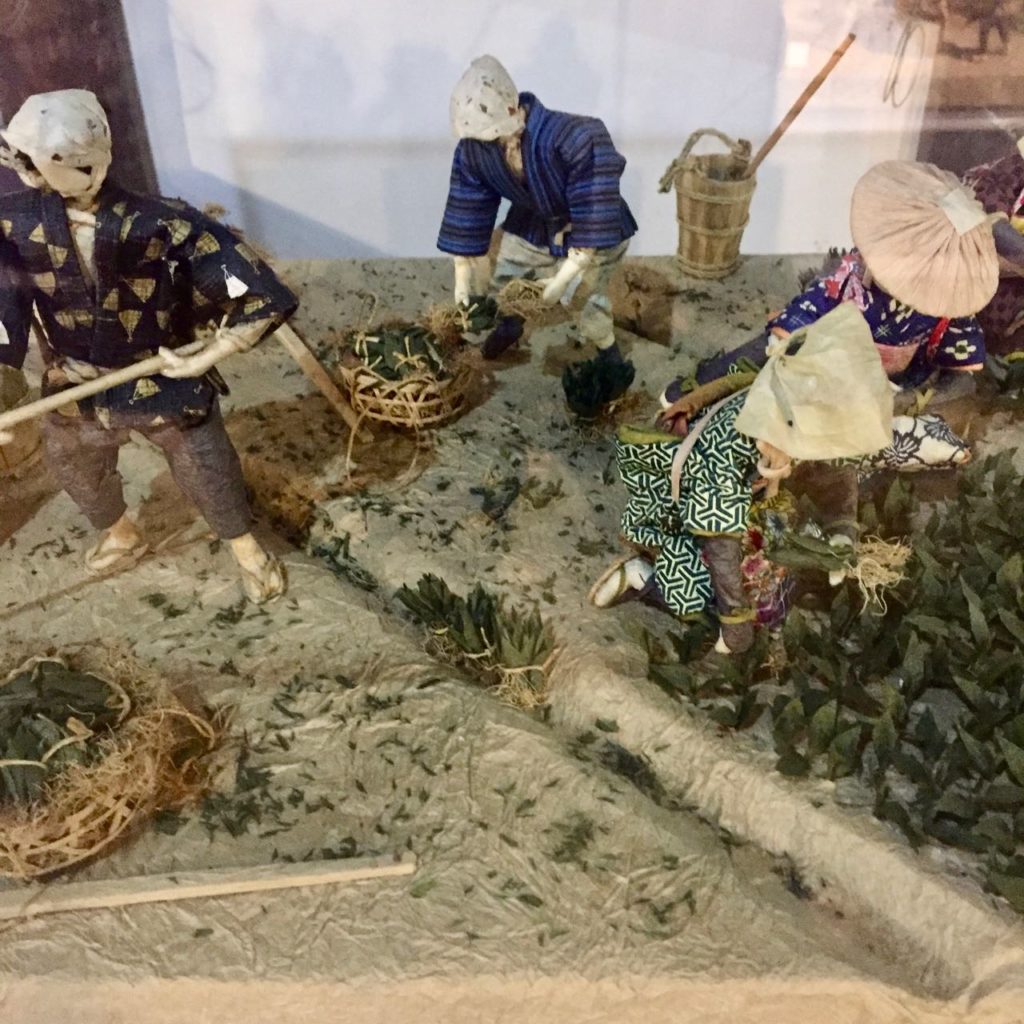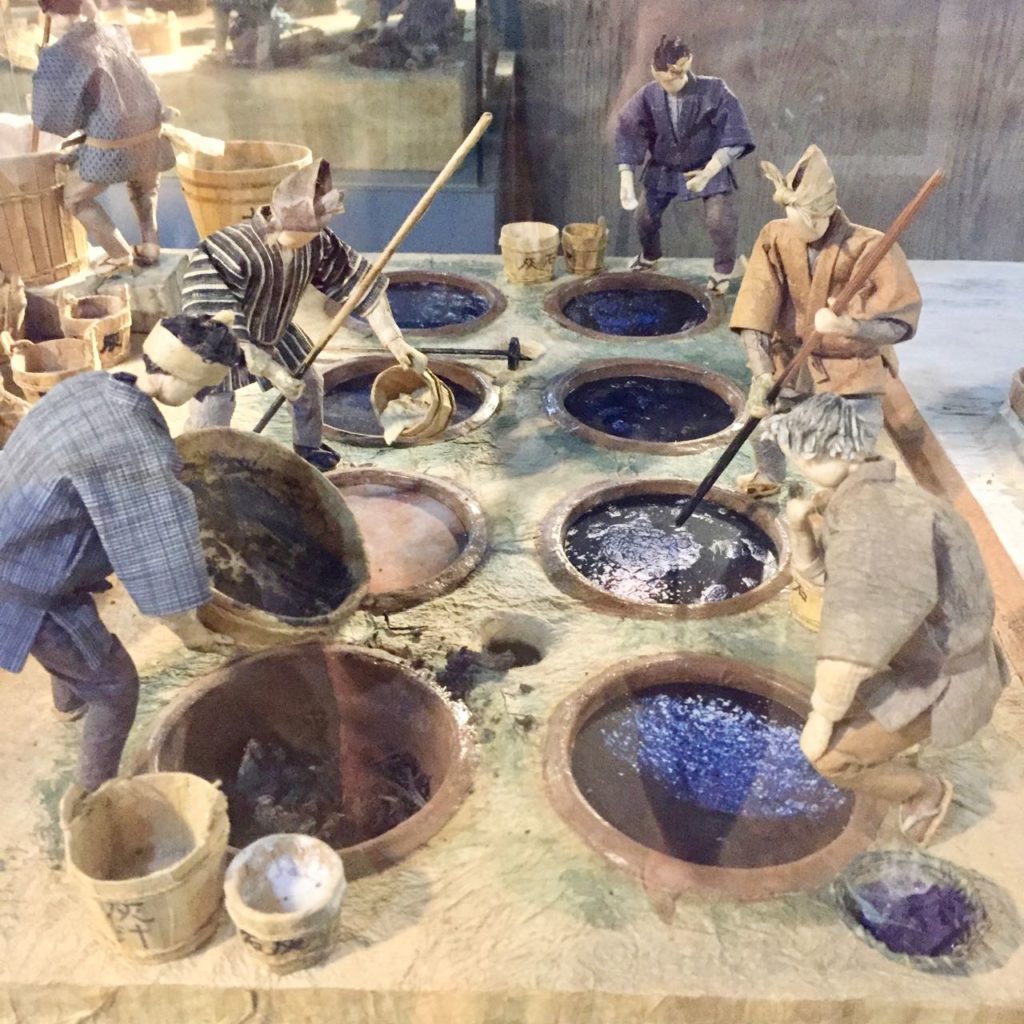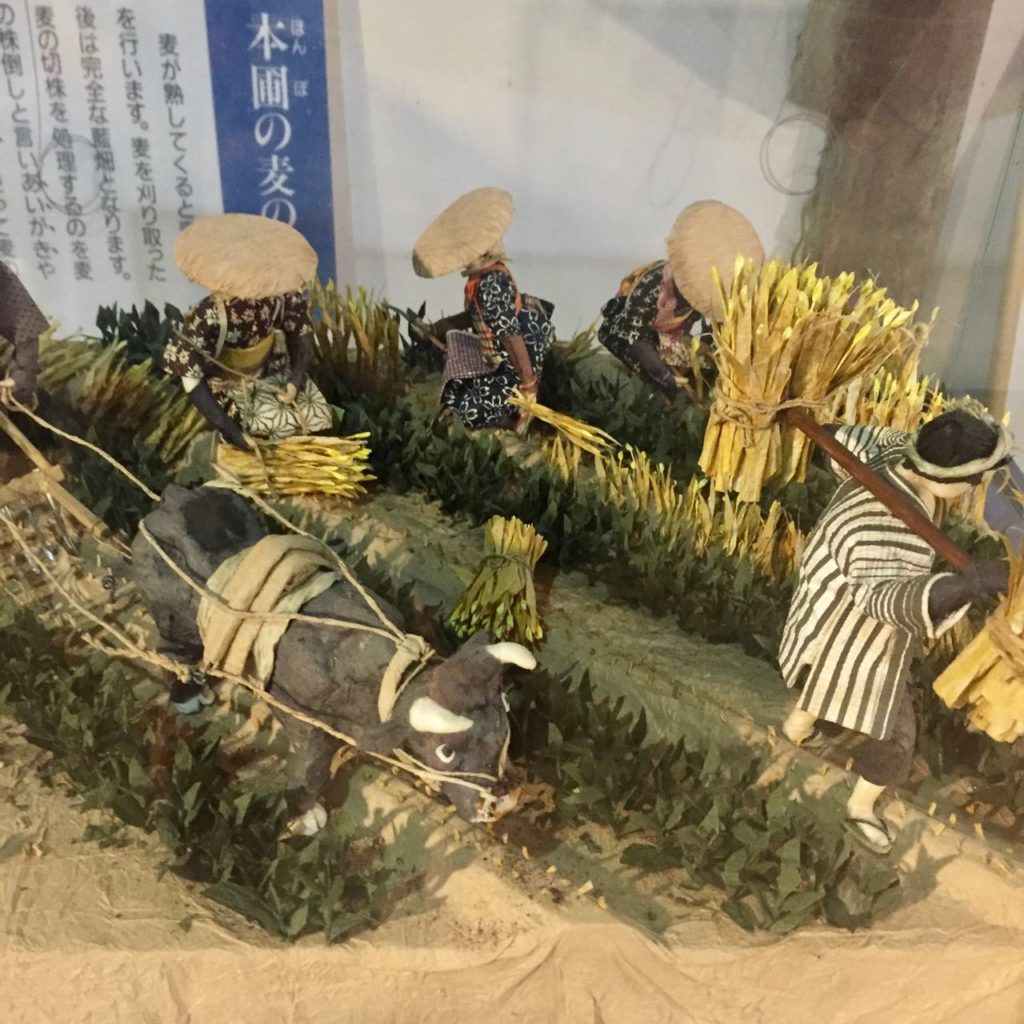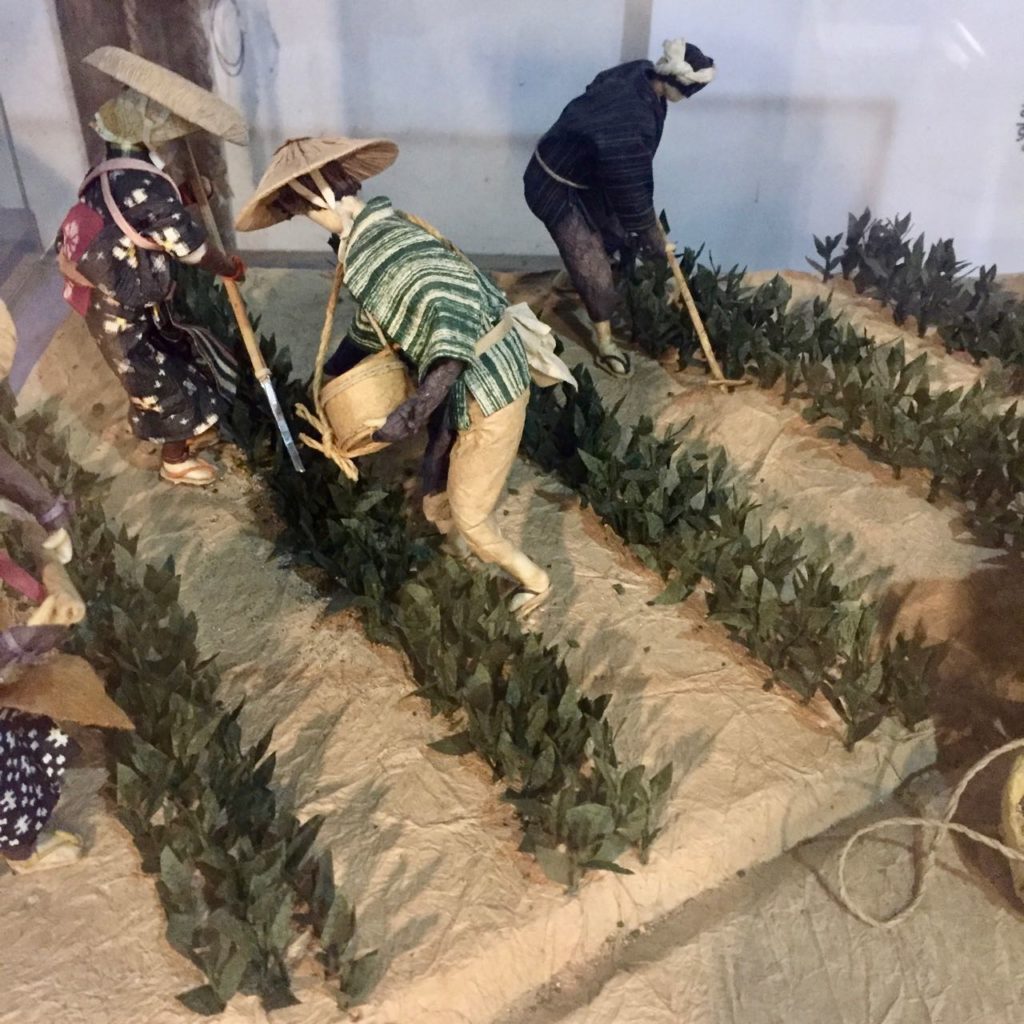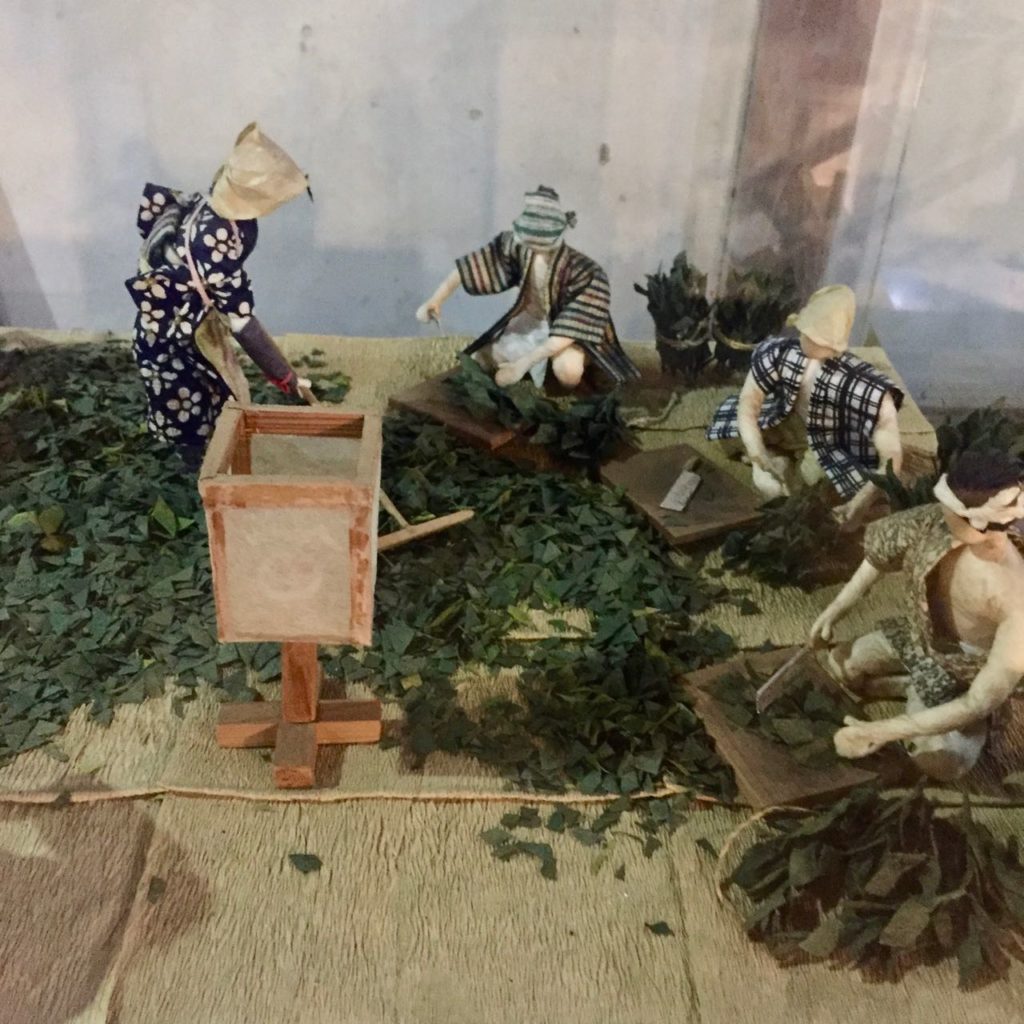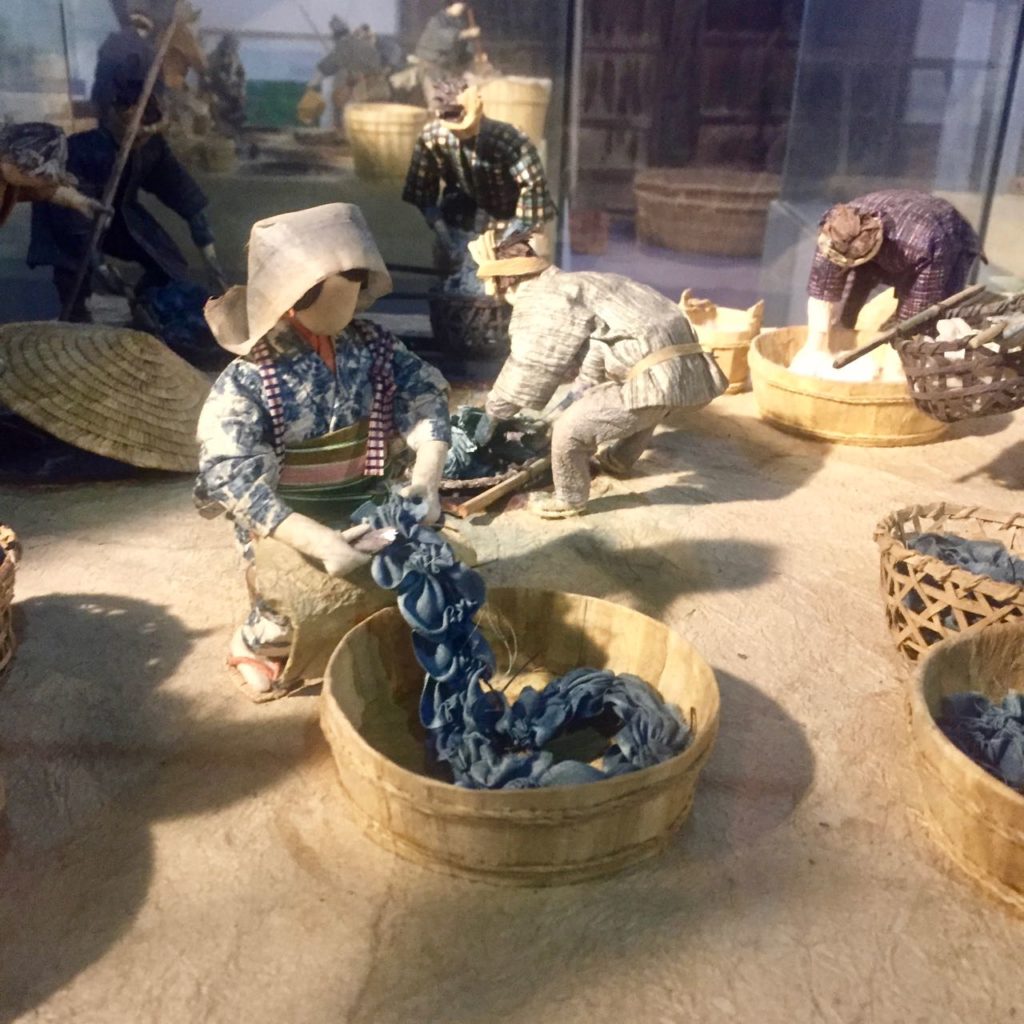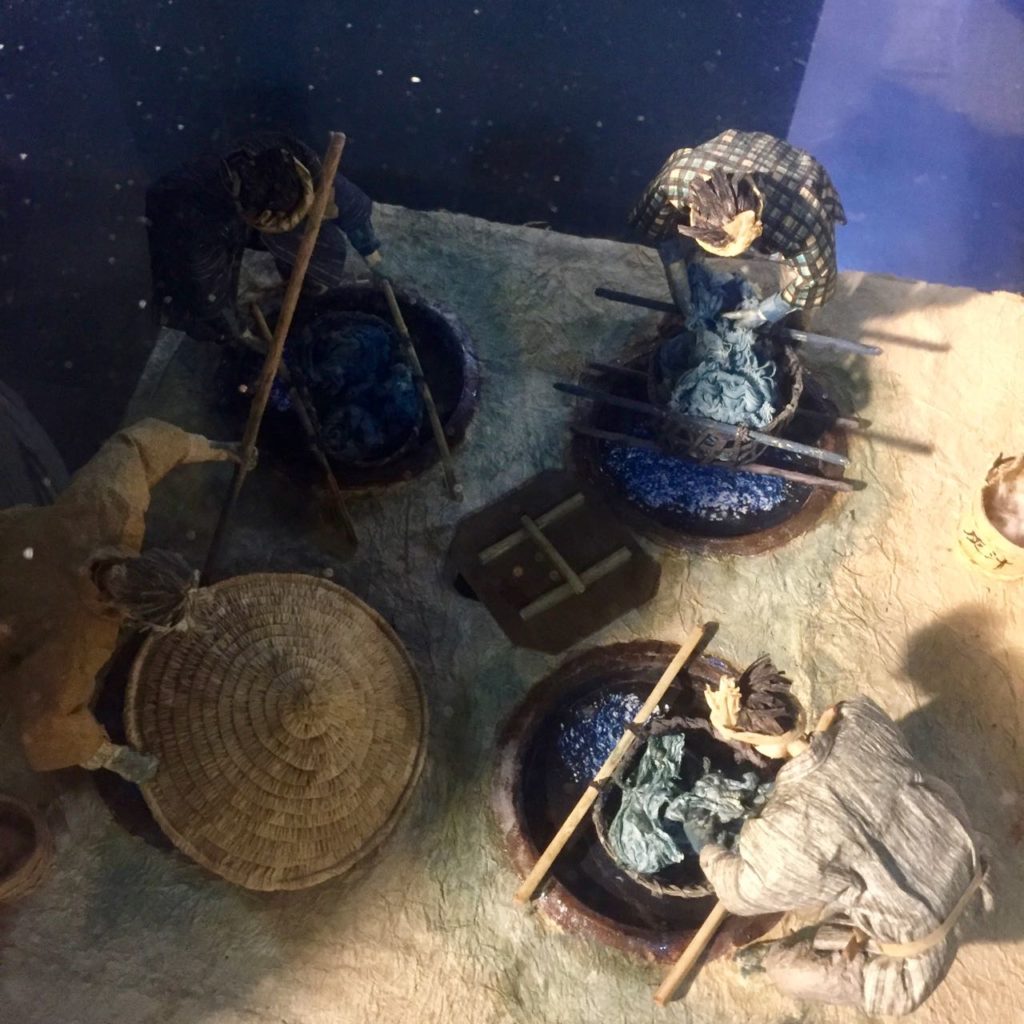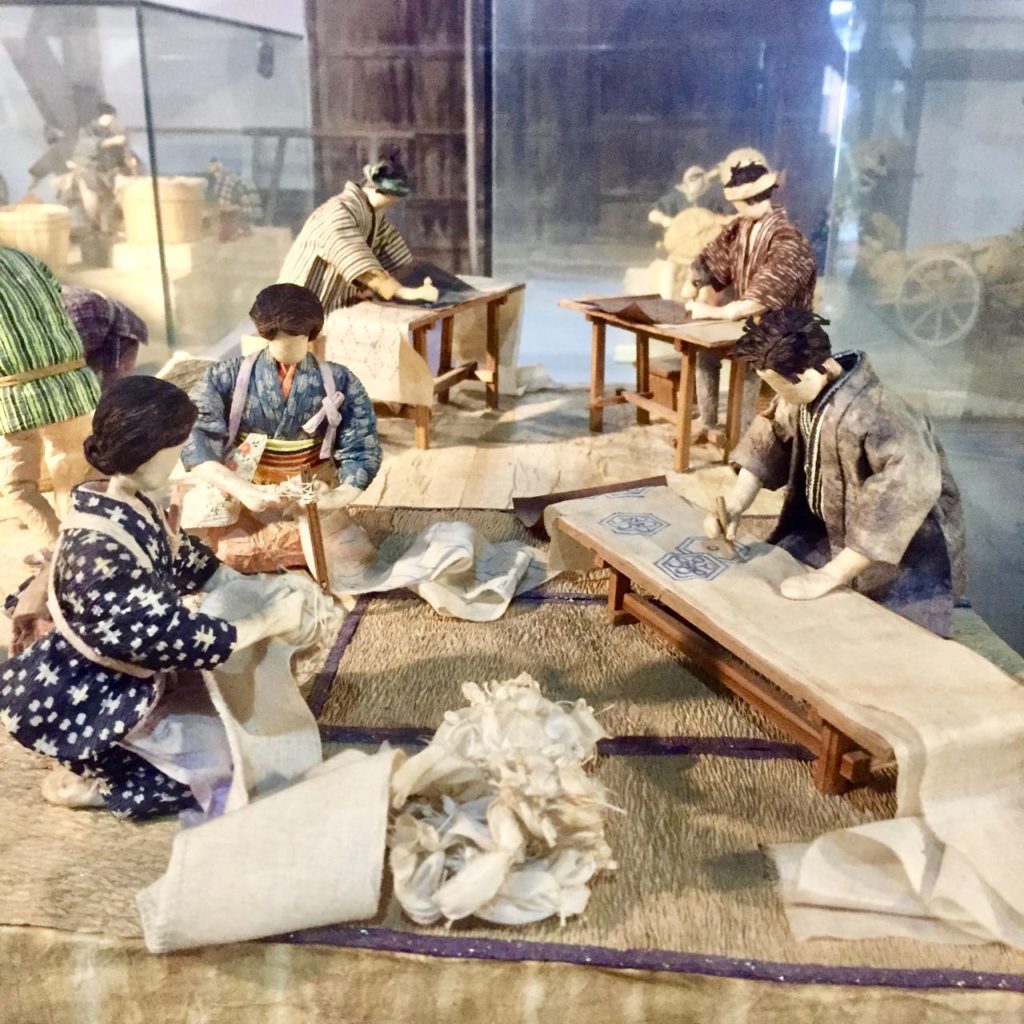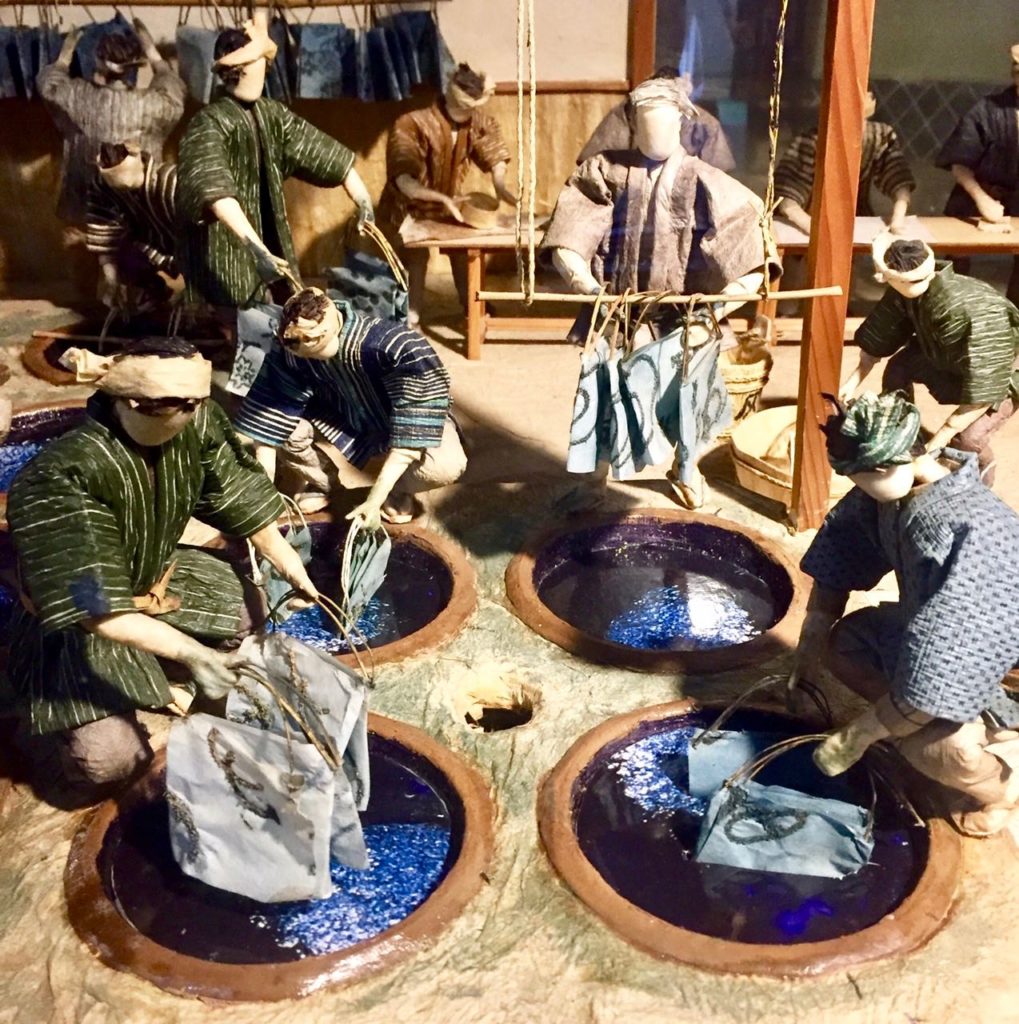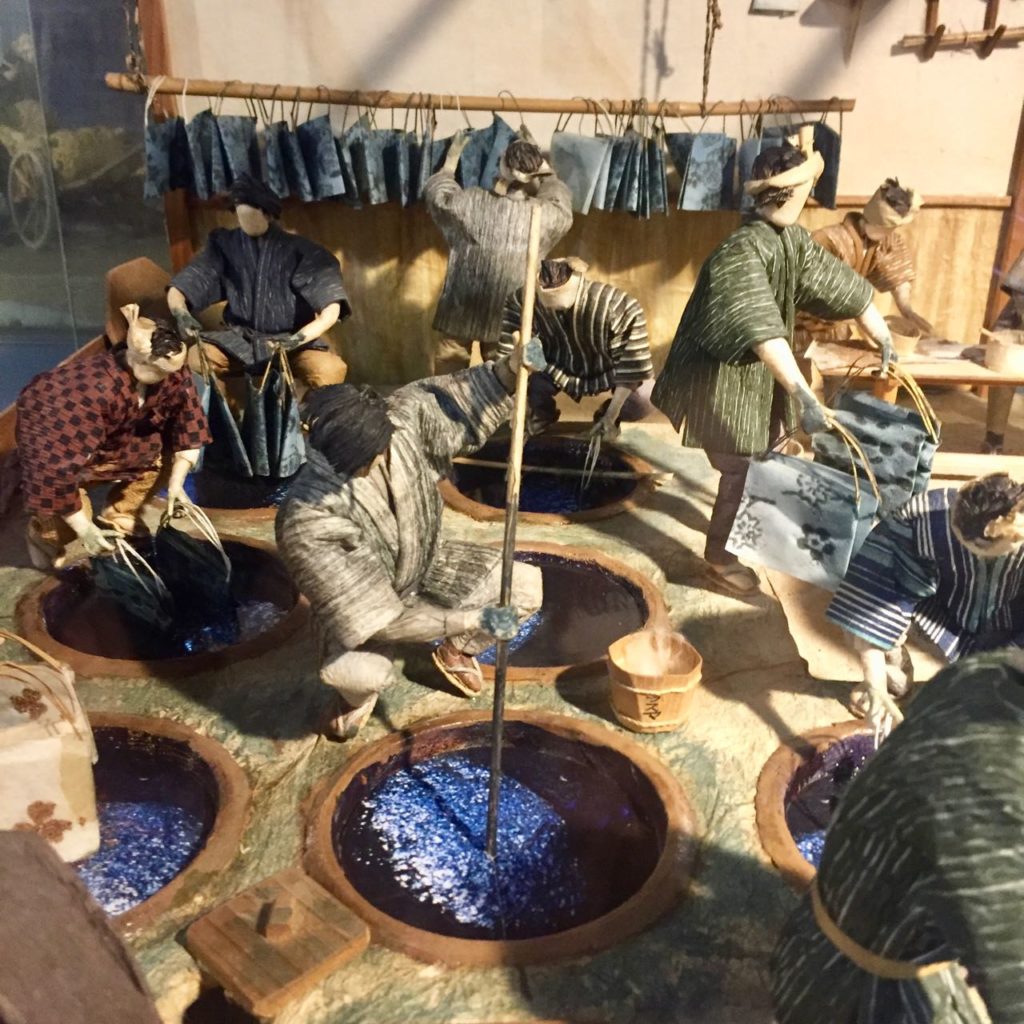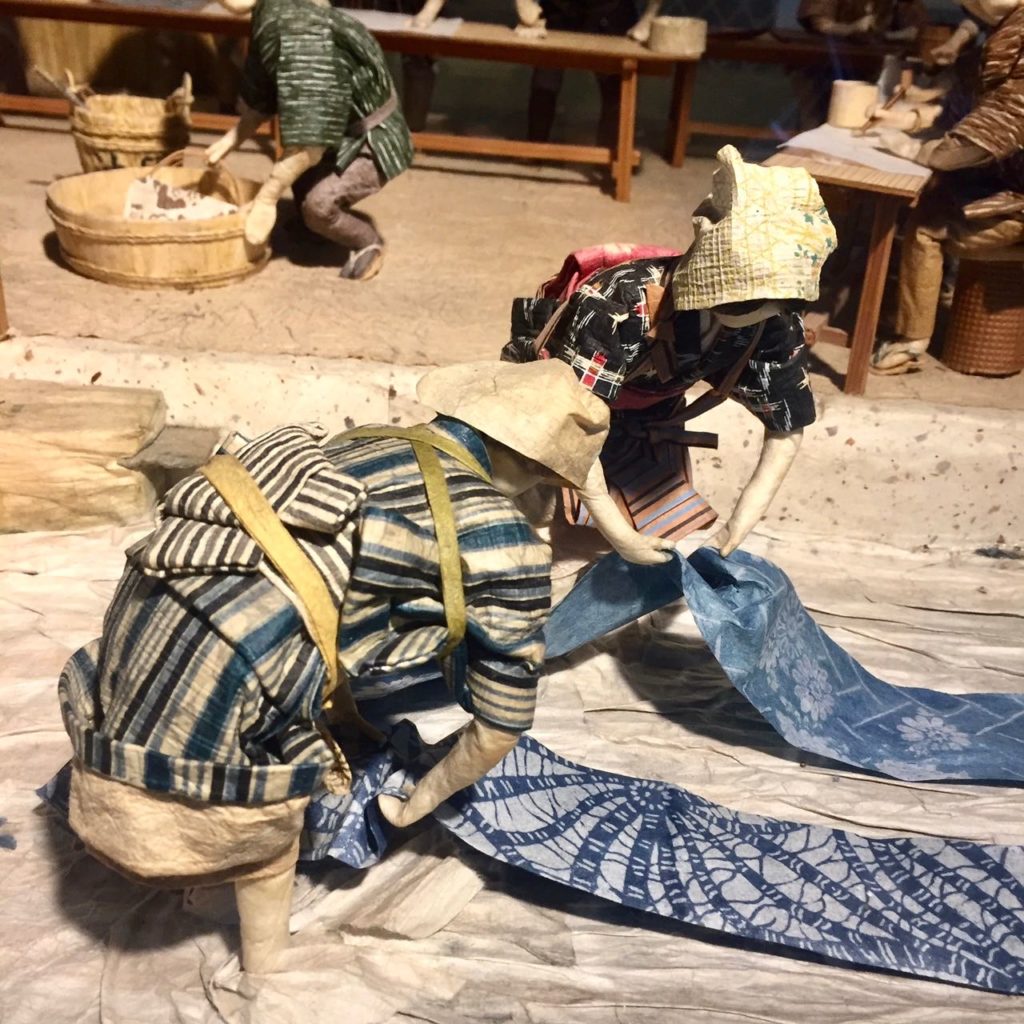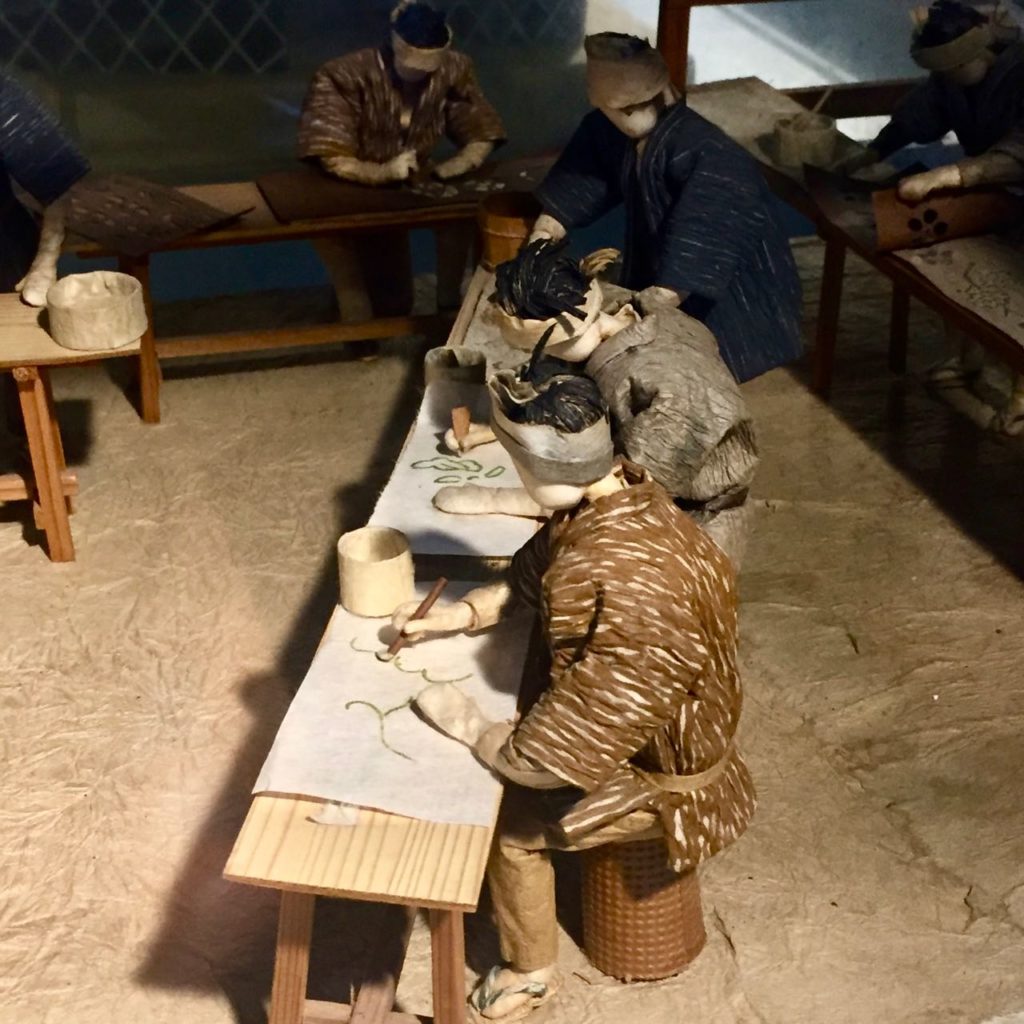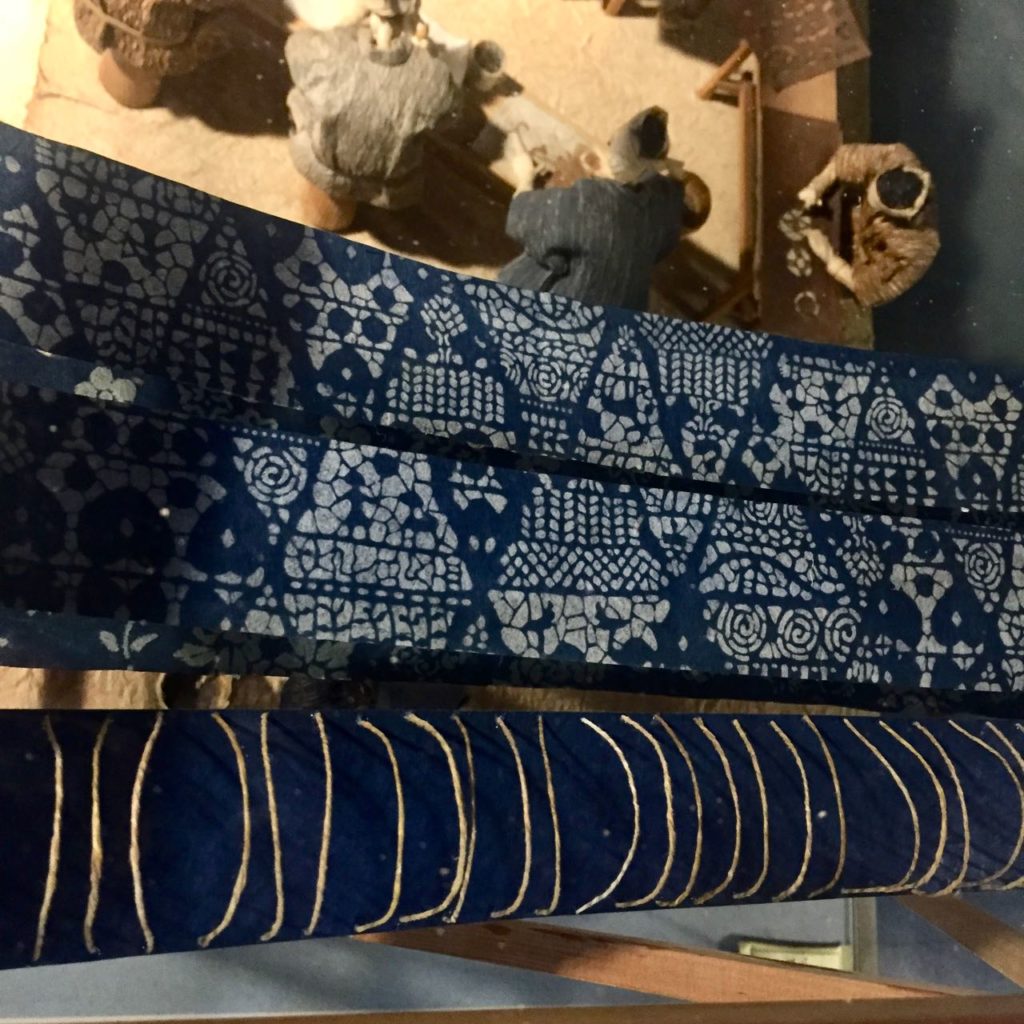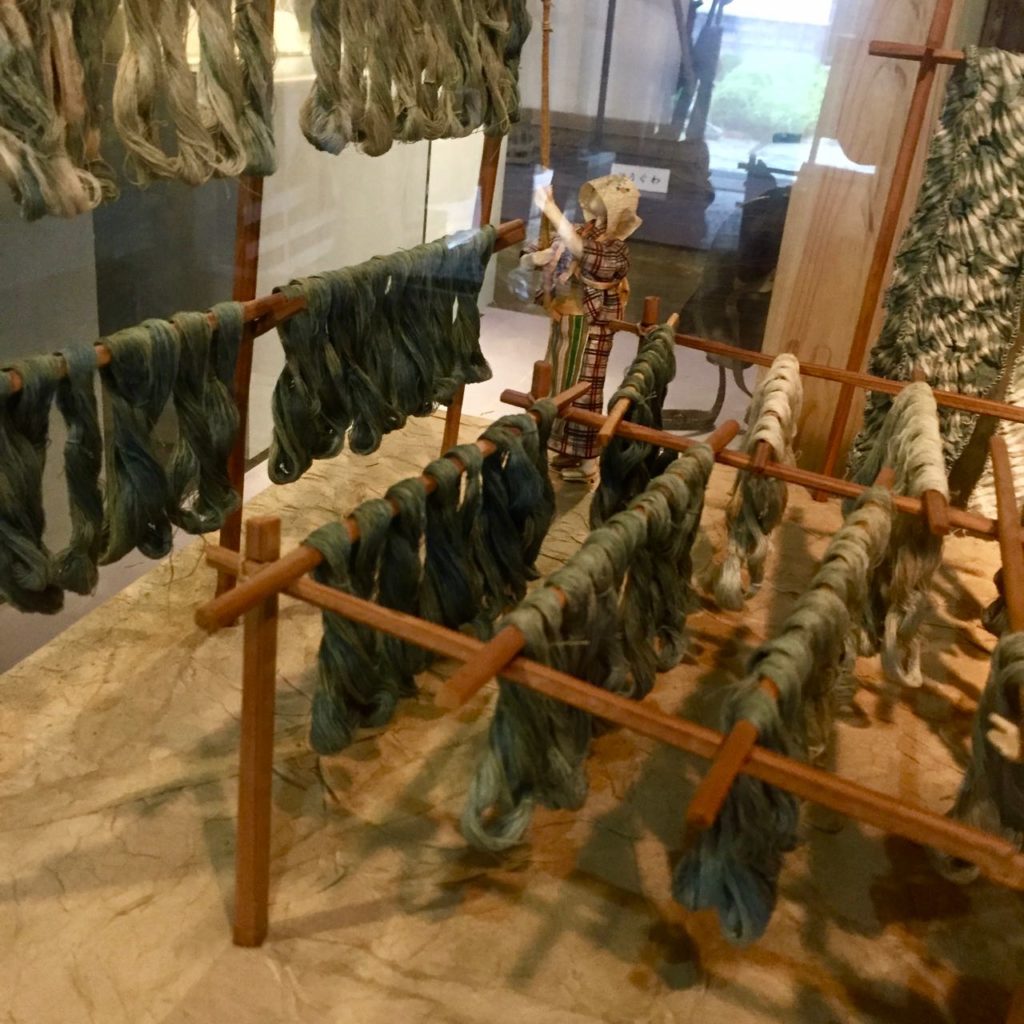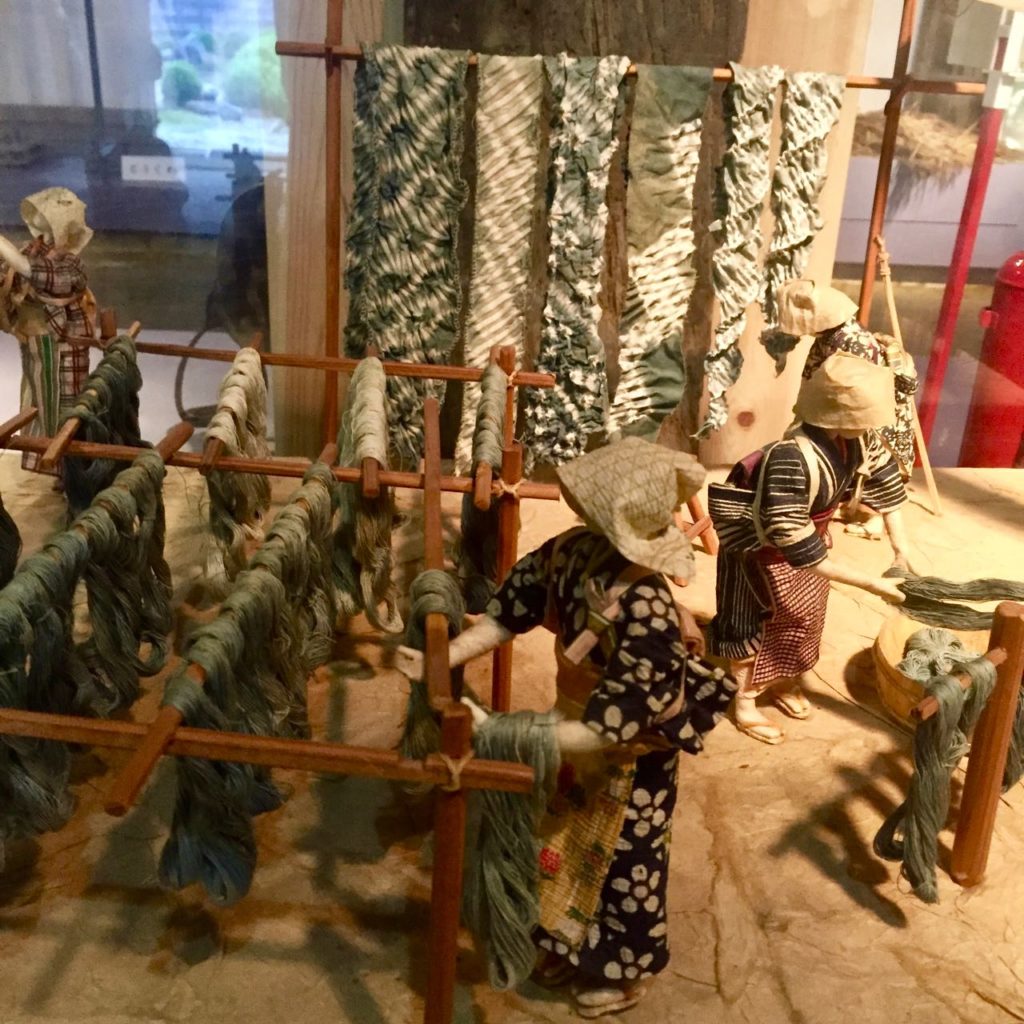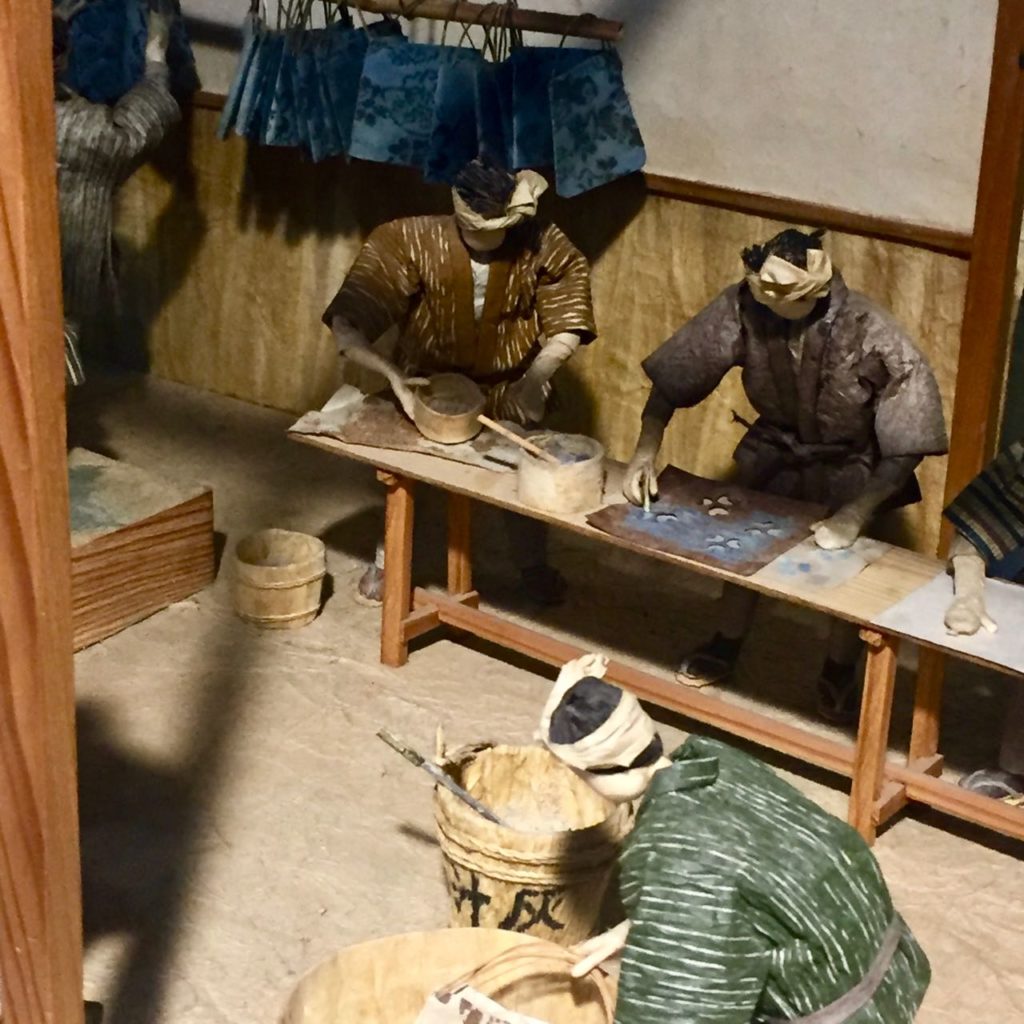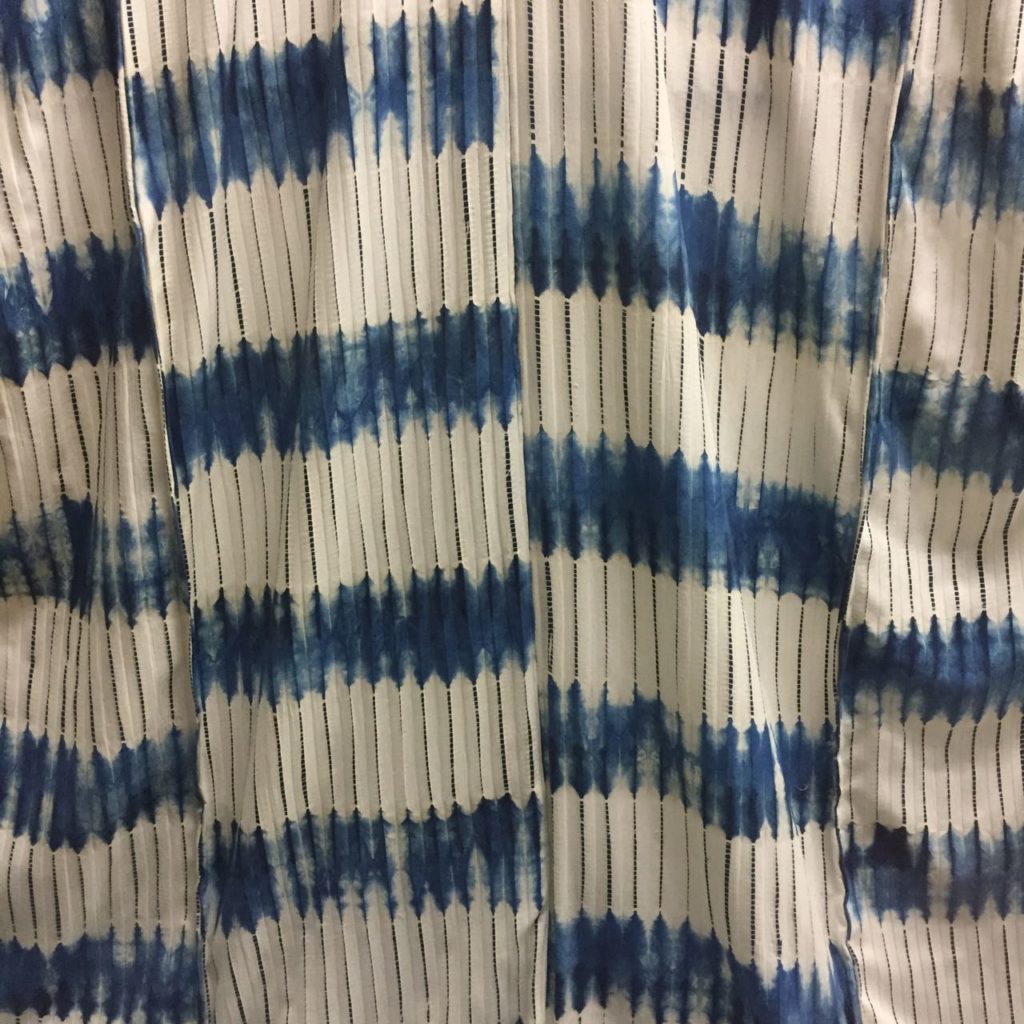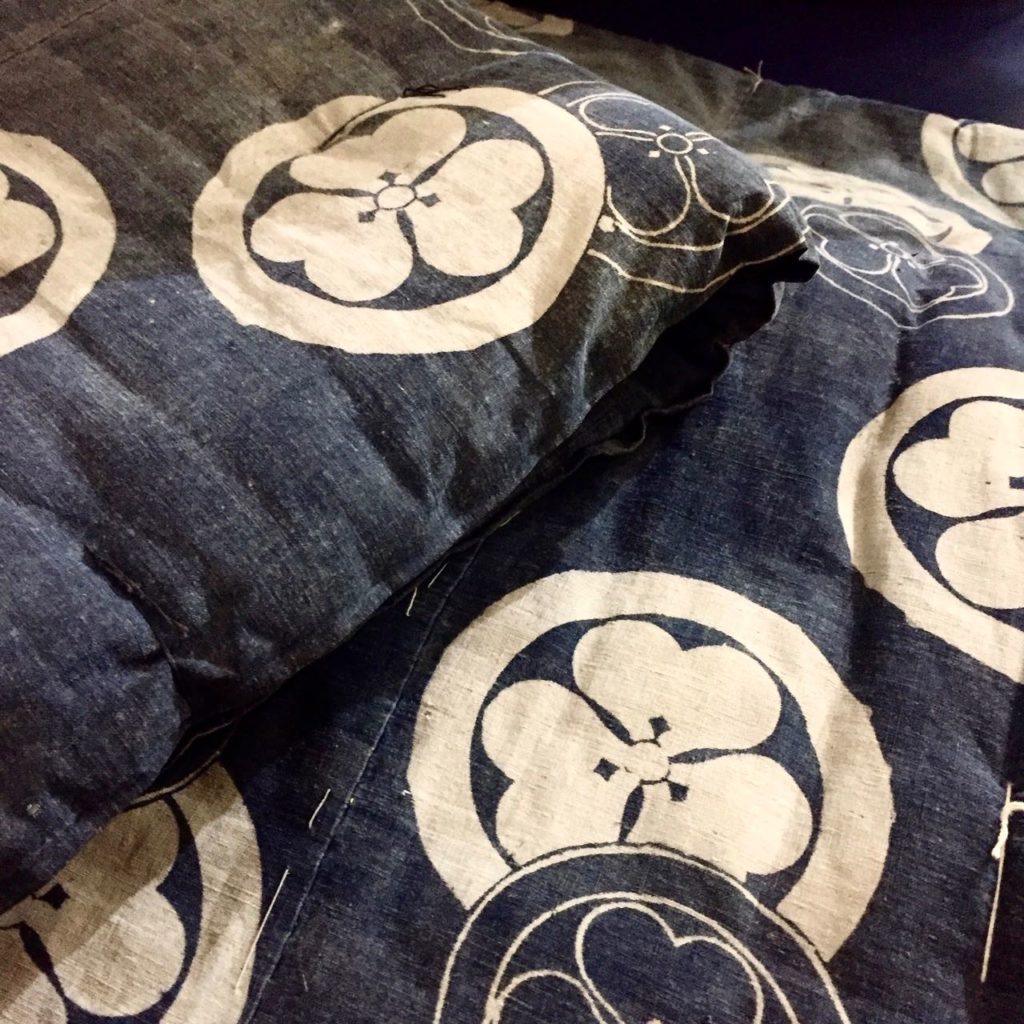Another perl in our awesome trip organised by @leafLuberon around the indigo course at Buaisou
Set in the former house of a major indigo merchant, this museum traces the history of indigo production, and use: from seed to fabric. The exquisite miniature scenes are a moving testimony or the hardship endured by people working in that trade.
Indigo seedlings are protected from pest at night with straw panels
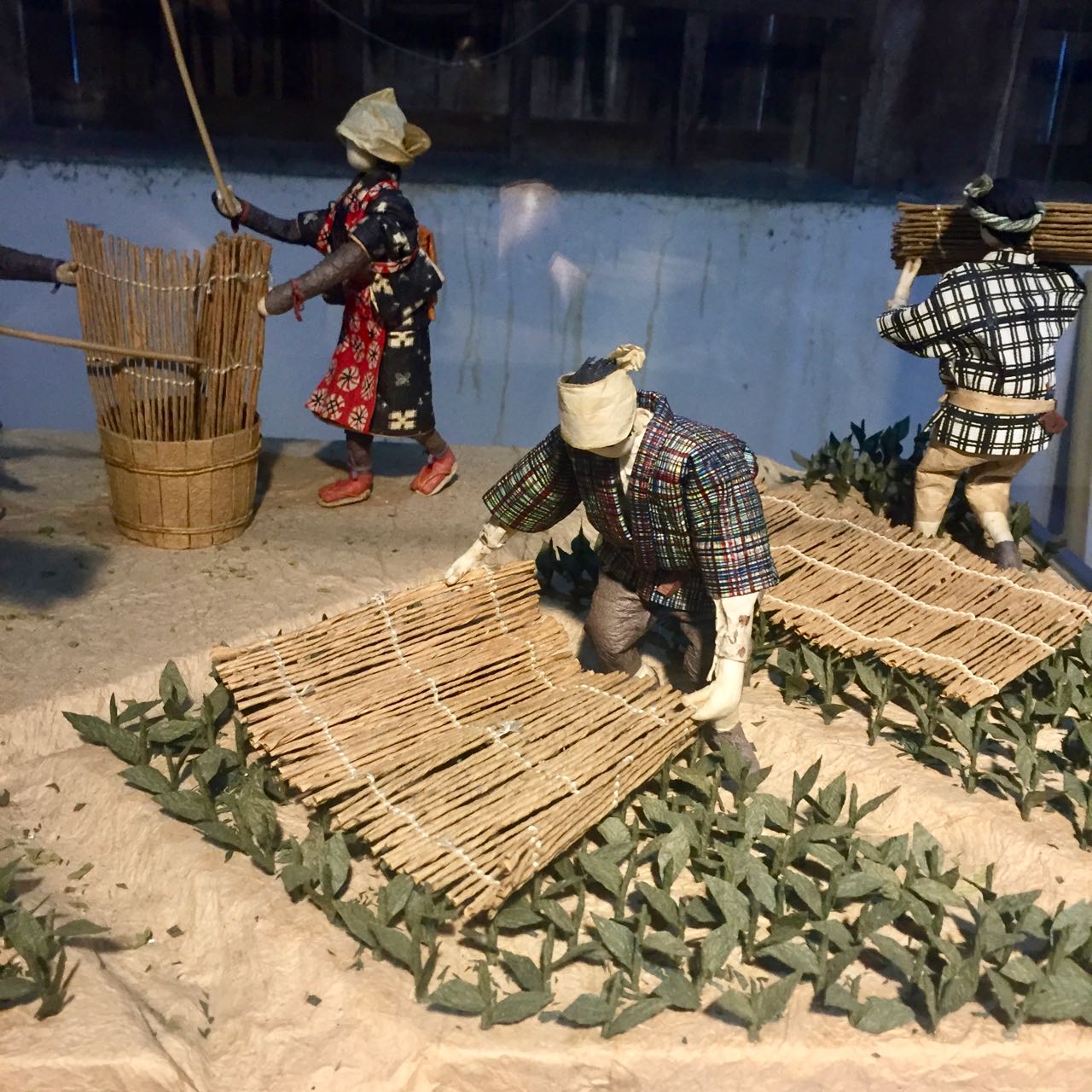
They are pulled out and transplanted in between wheat rows, wheat protects the young seedlings from the strong sun
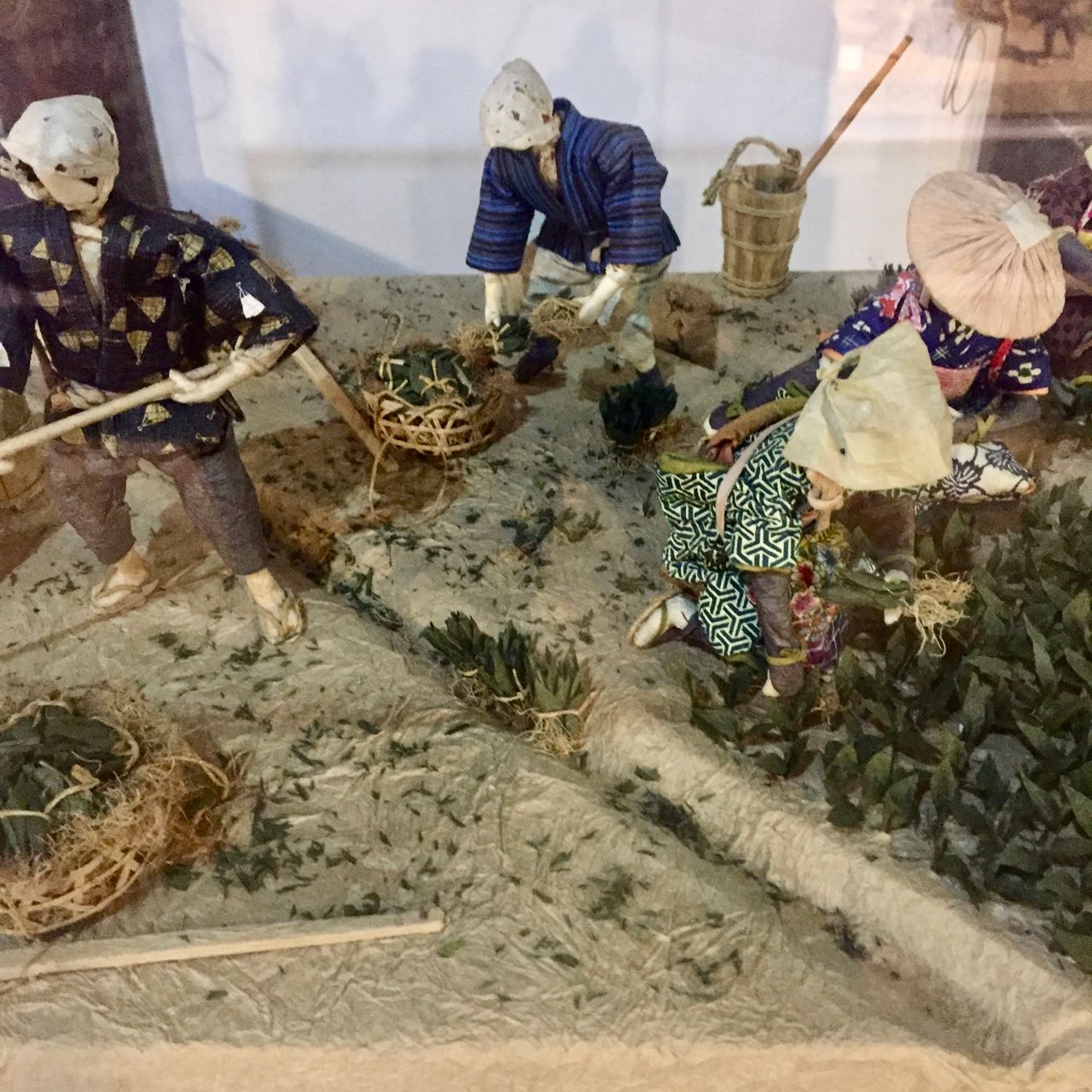
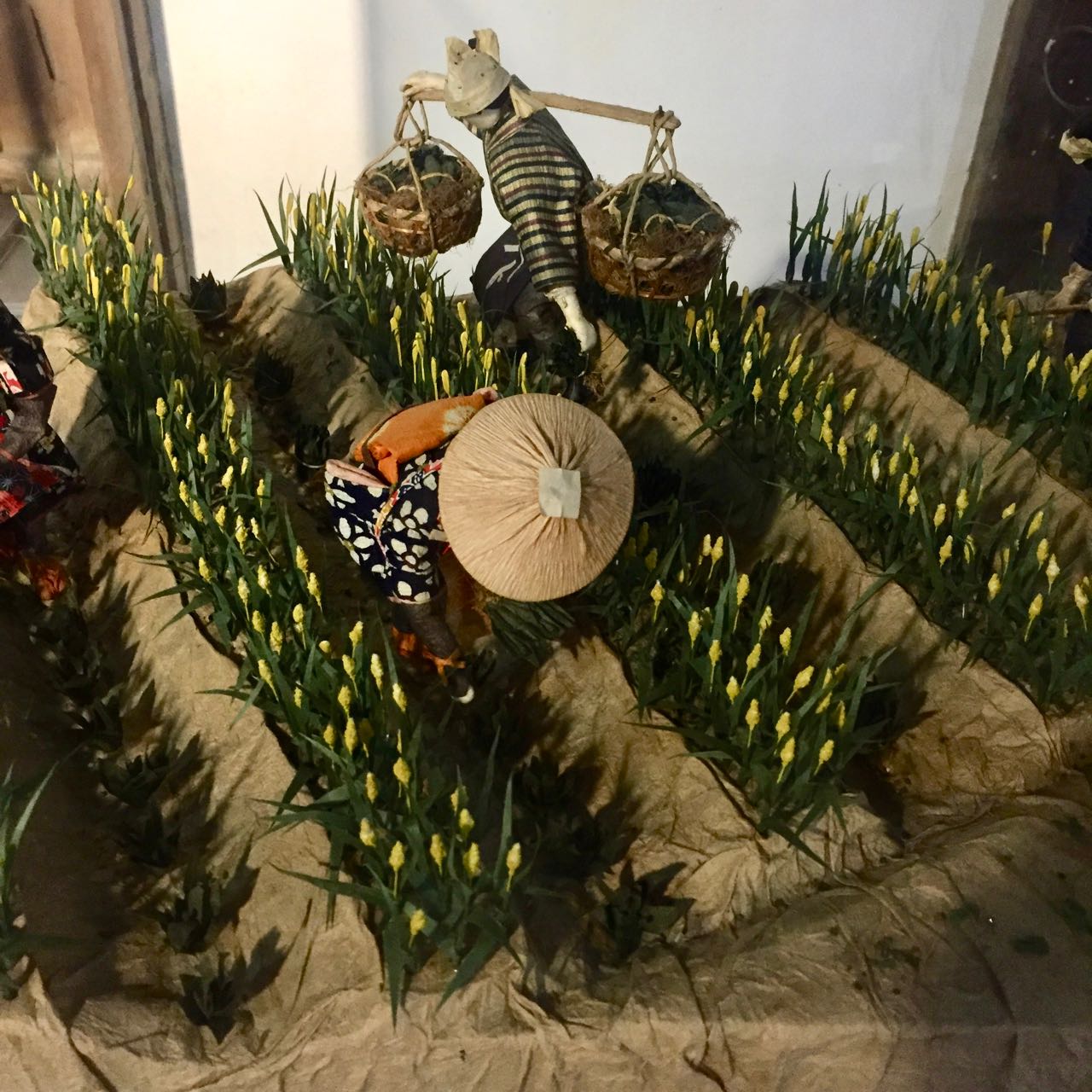
Wheat is than harvested, leaving only the indigo to thrive
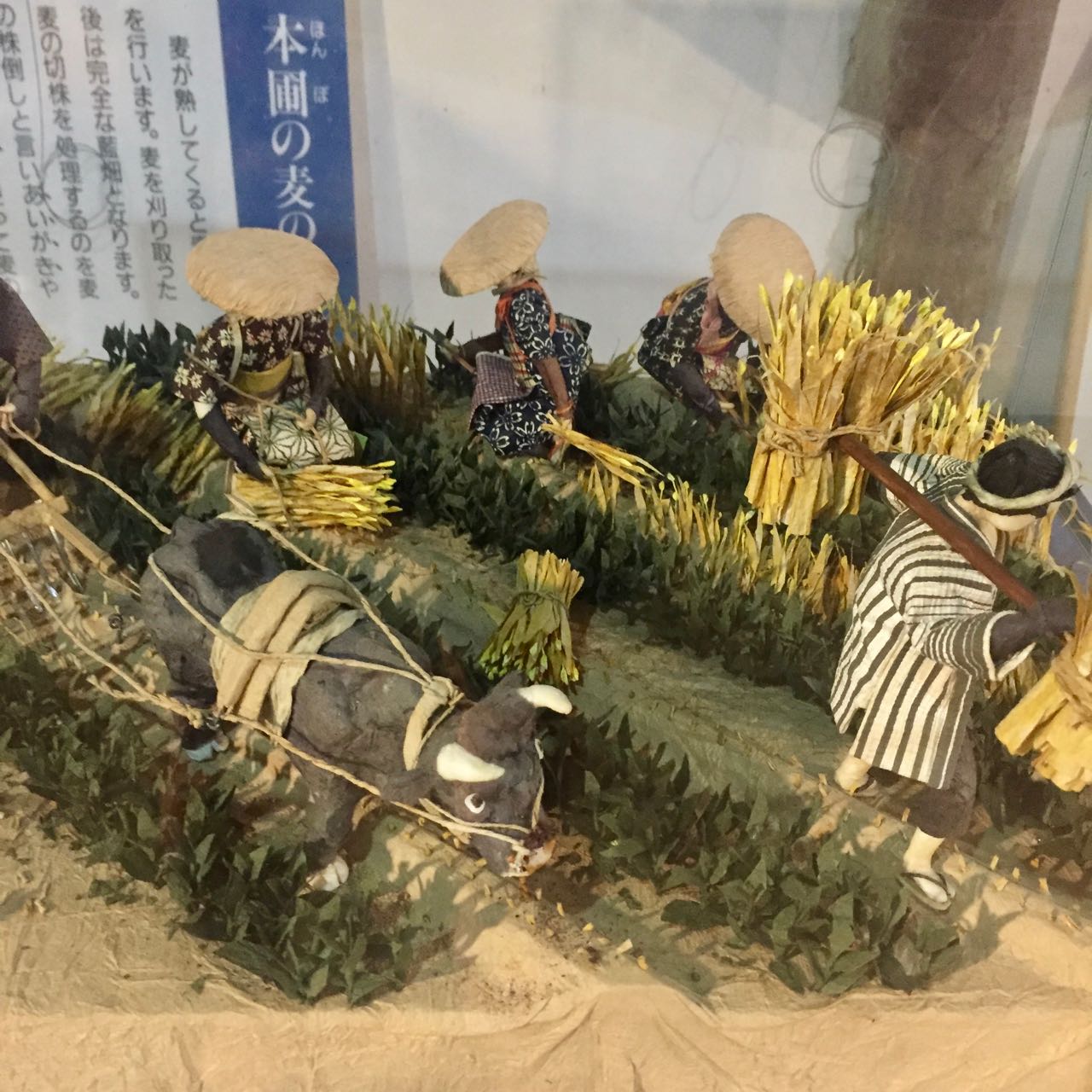
Fertilisation
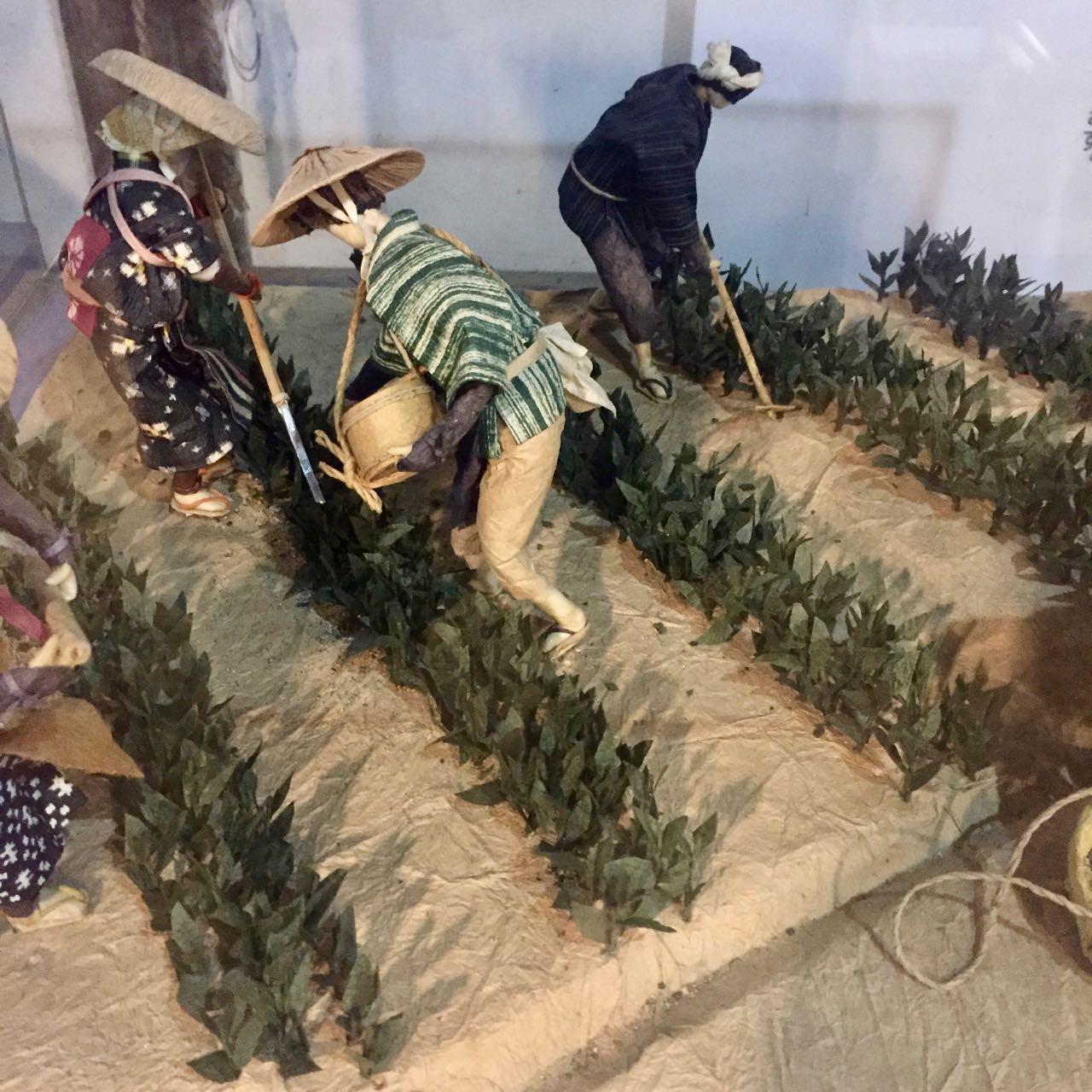
The indigo is harvested and the leaves are cut and separated from the stem
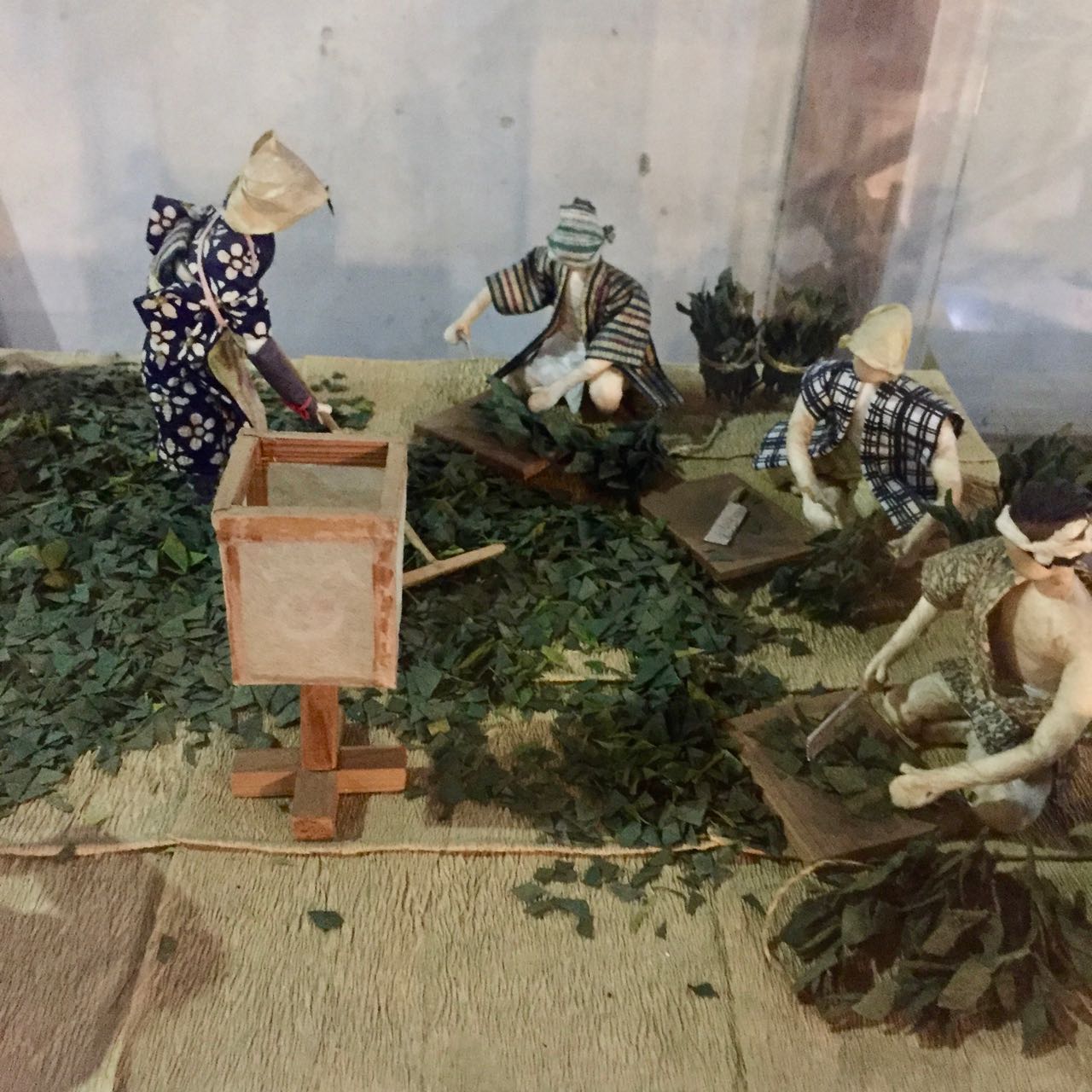
The indigo leaves are dried and made into Sukumo, a leaf compost, which is than used to create the indigo dyeing vats. The process is called aidate
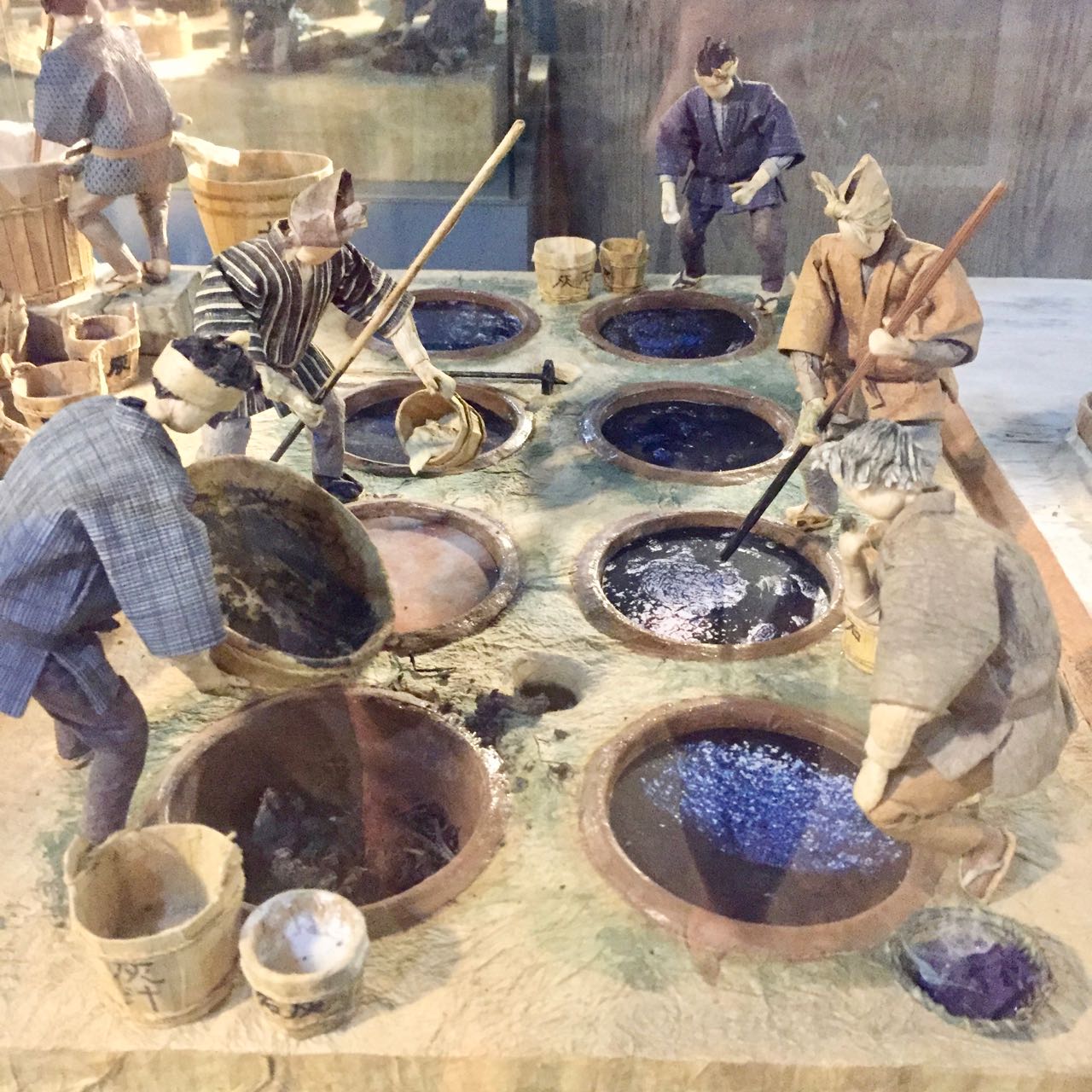
The following scenes show the multiple ways pattern are created, with different techniques of reserve making: tied shibori, katazome (stencil) and roketsuzome (batik)
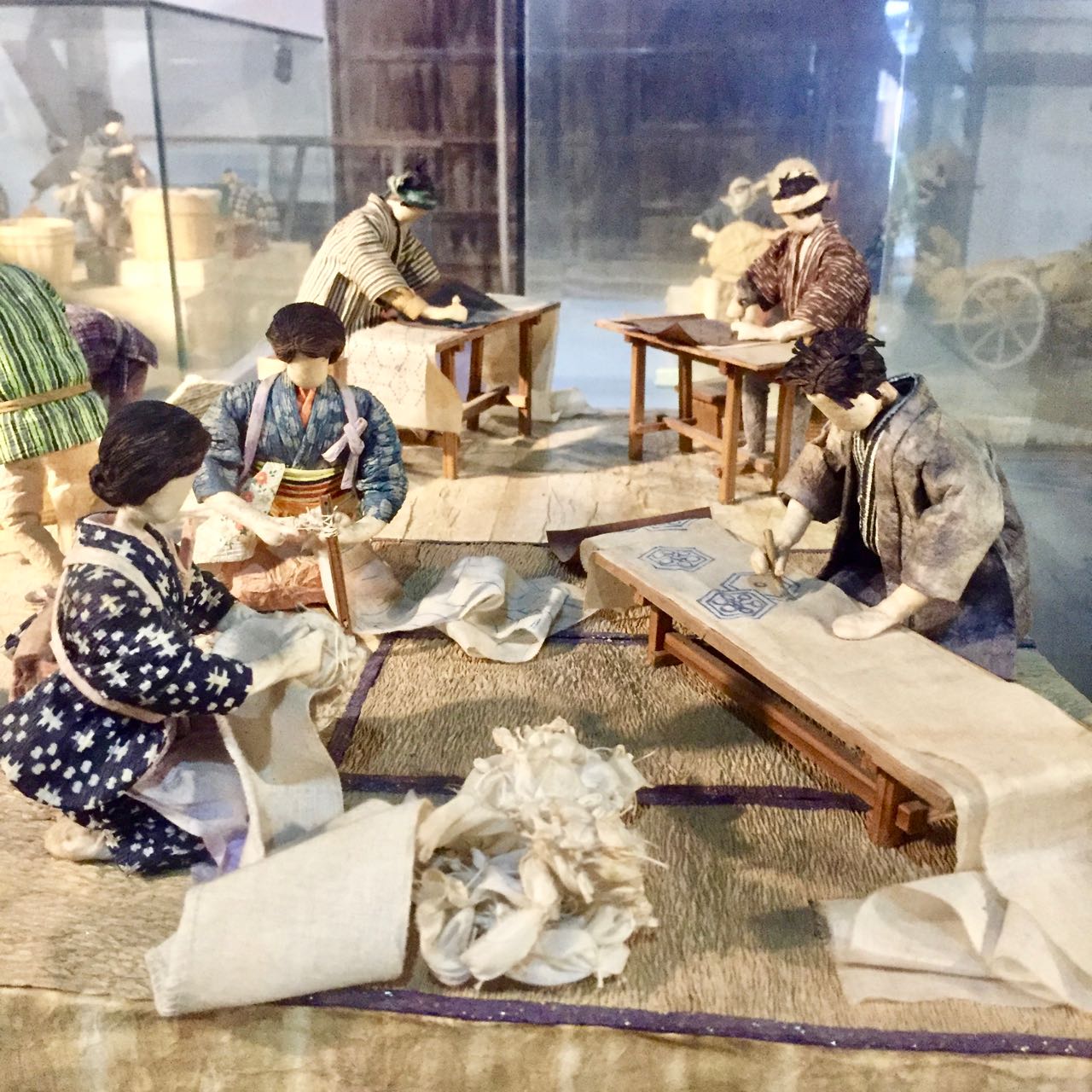
Untying the knots after the dye
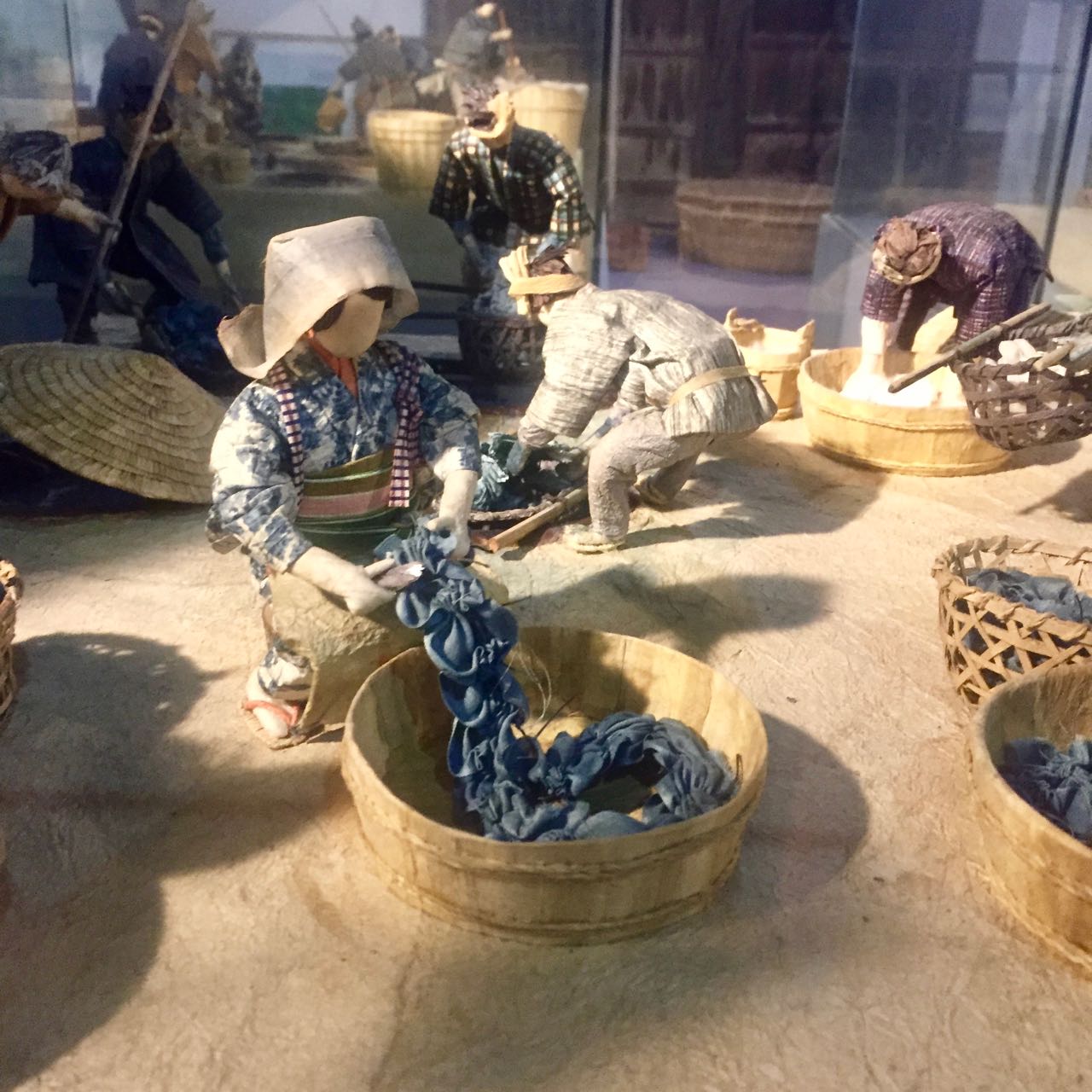
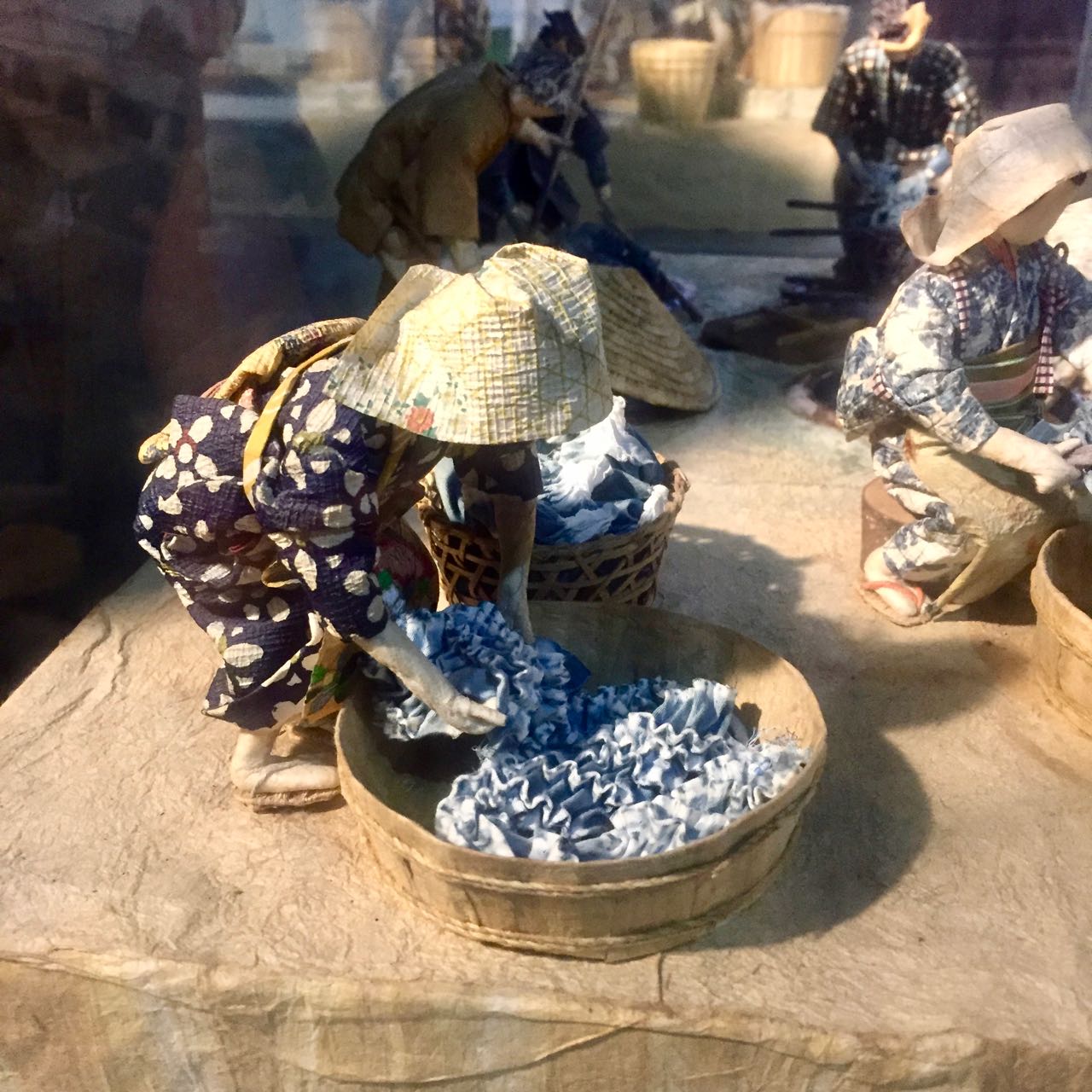
Dying the fabrics in sunken indigo vats
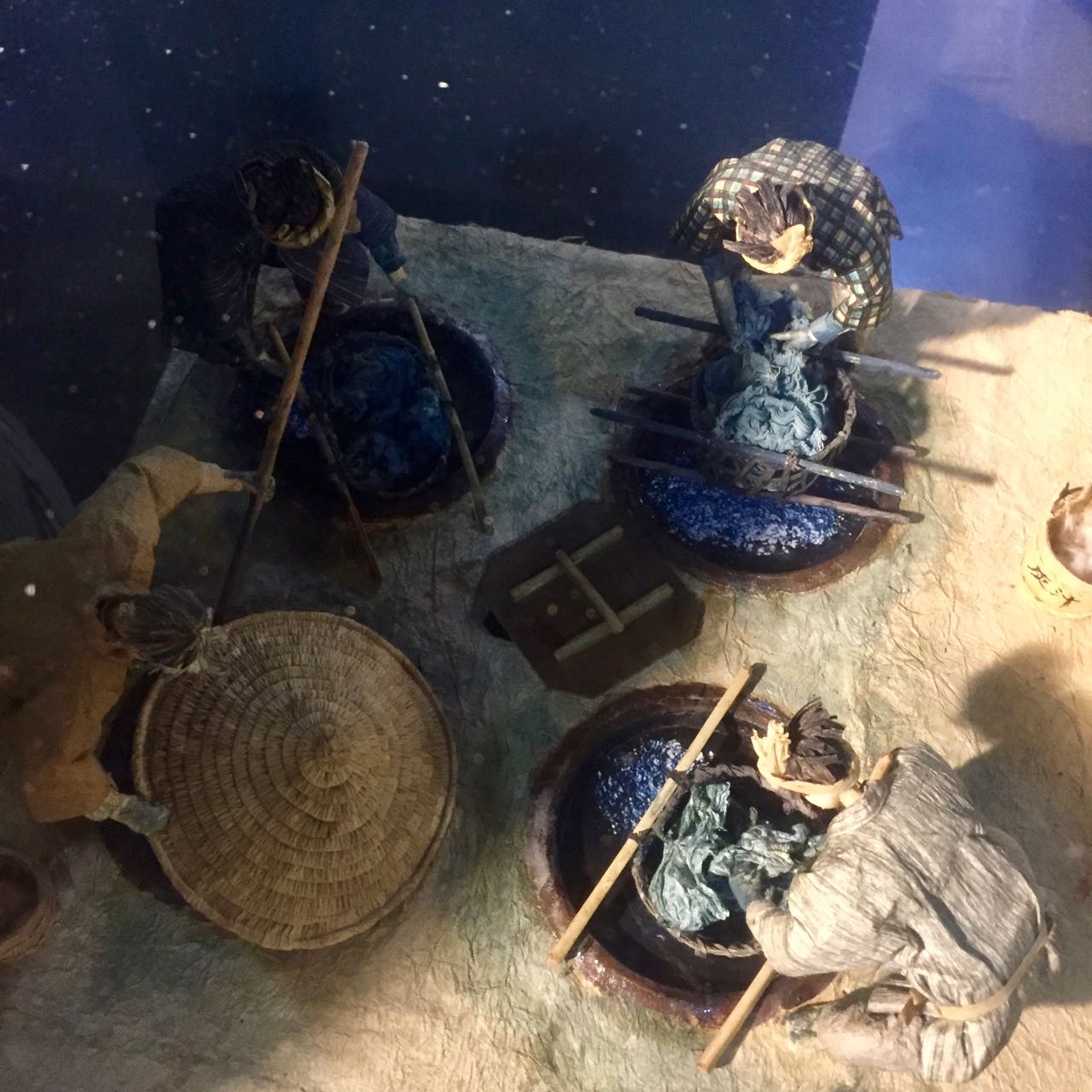
Katazome

Roketsuzome
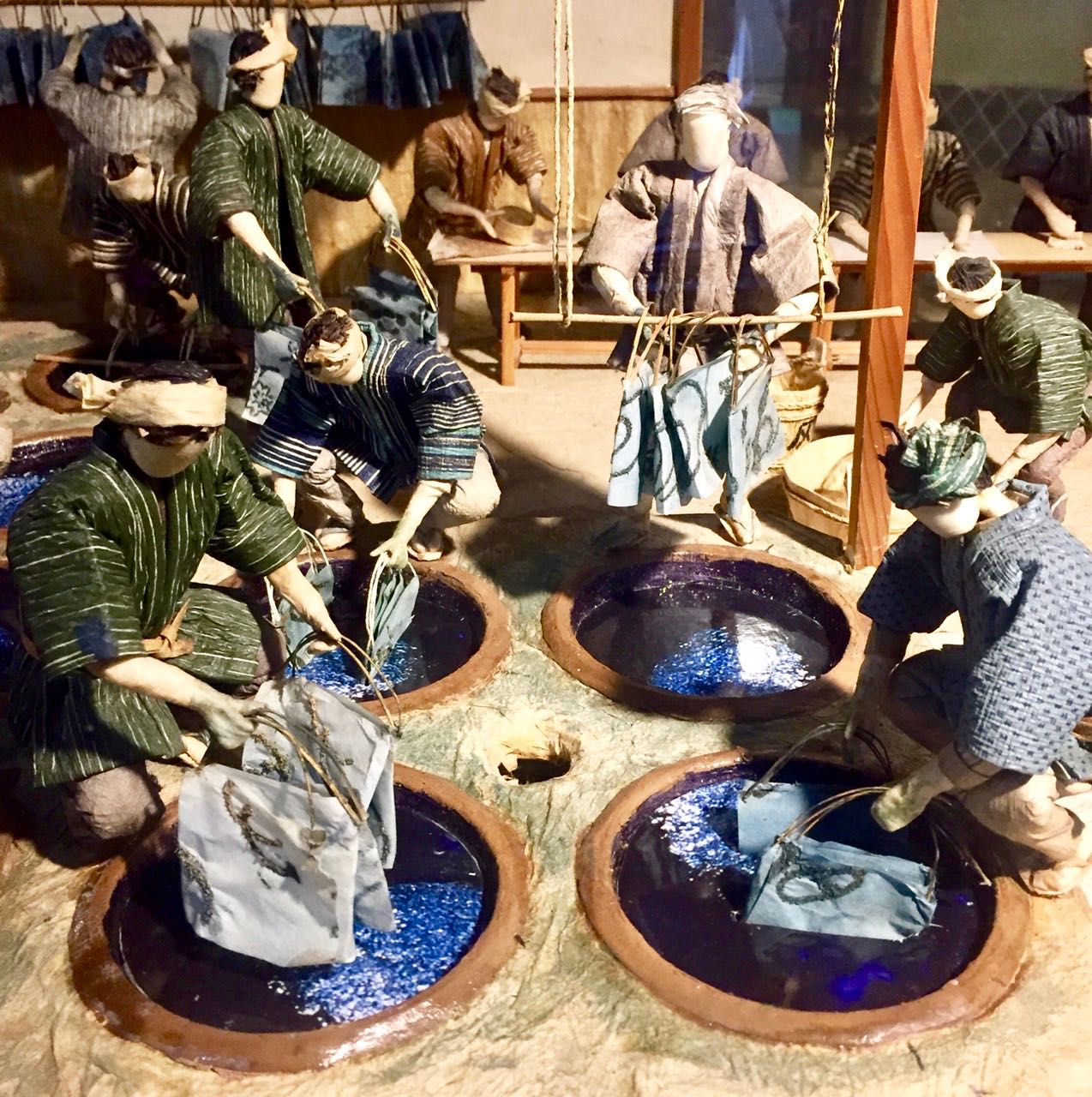
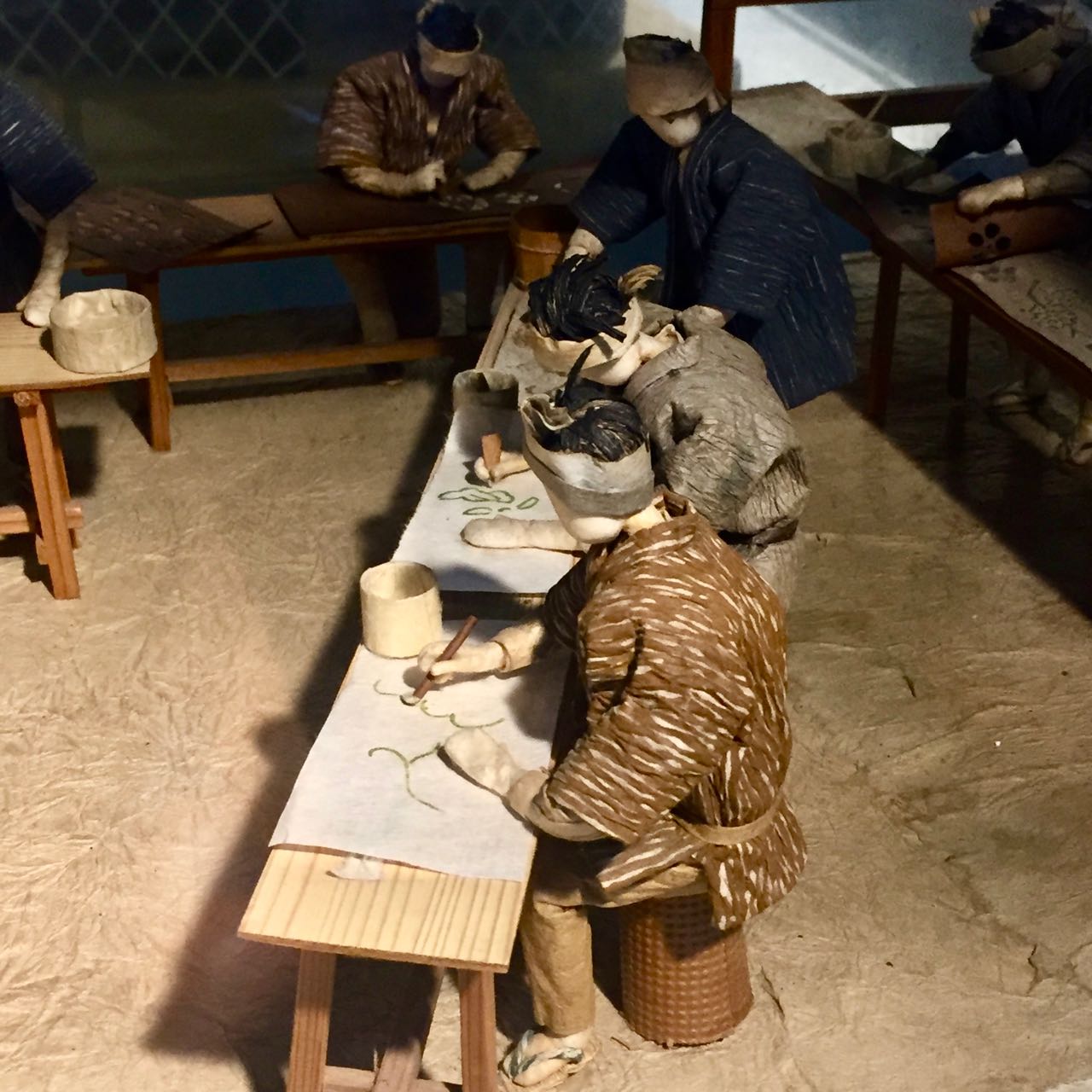
Katazome
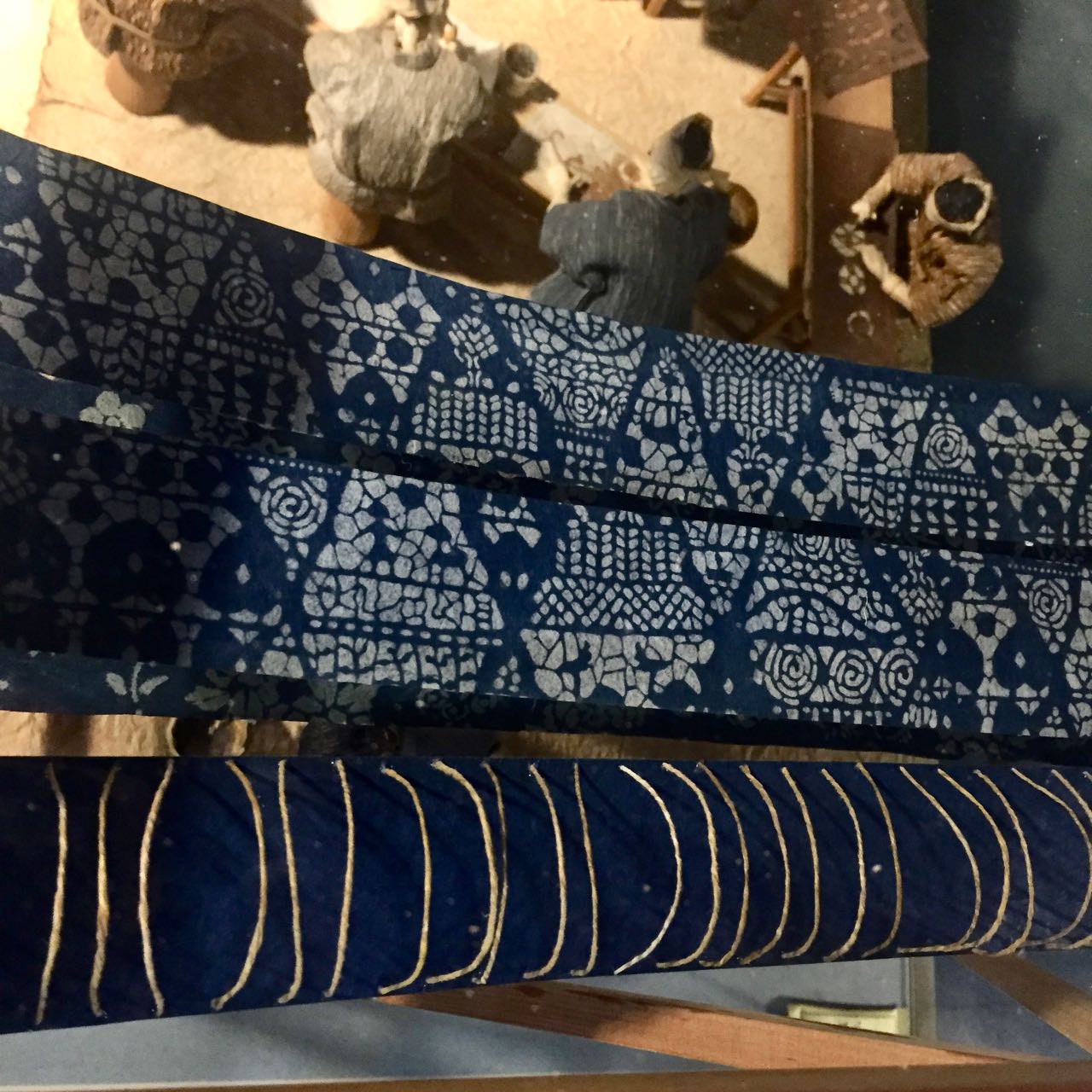
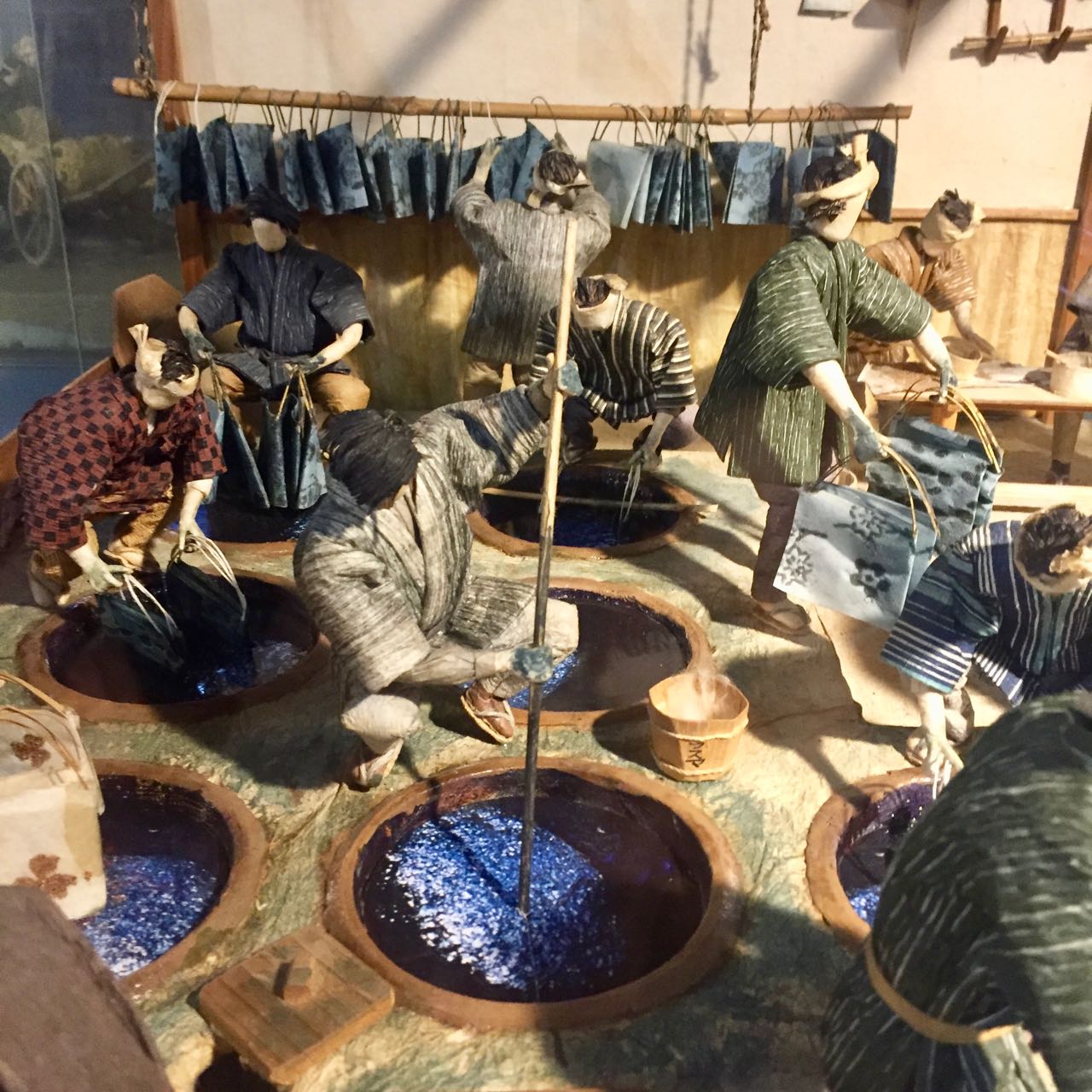
Dyed threads

Shibori patterned length of fabric

A detail from an ancient Yukata and blanket from the museum

